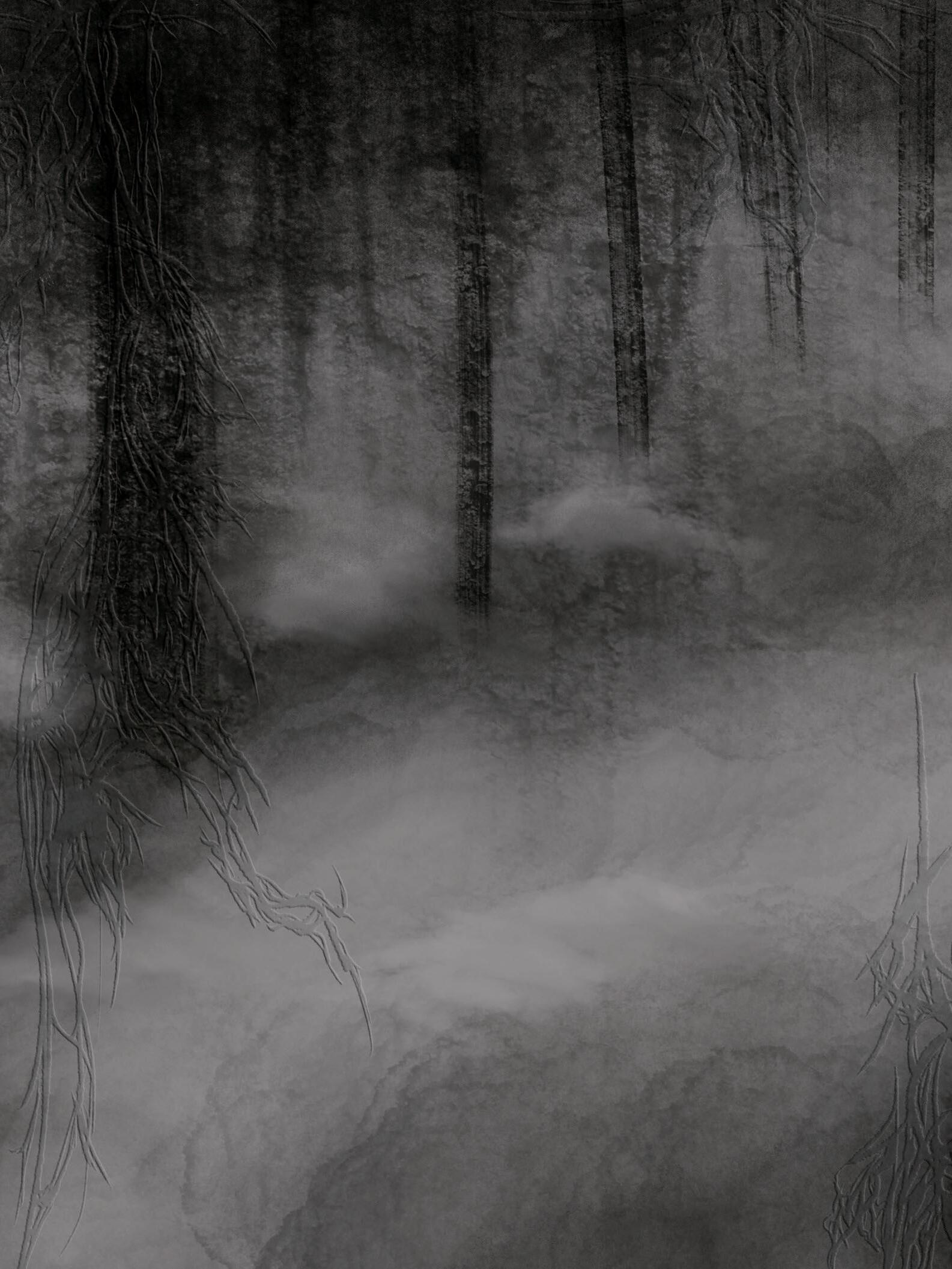














Promotions Member
Emily Seitz is listening to...
Lizzy McAlpine five seconds flat
Clairo "North"
The Marias "Over the Moon"
Collateral Designer
Jessica Wax is listening to...
salute "Heaven in your Arms"
Doechii "SLIDE"
Locklead "Moon"
Interviews Editor
Rilyn Szabo is listening to...
Rilo Kiley "Portions for Foxes"
The Magnetic Fields "The Book of Love"
Shygirl "encore"
Photographer
Ula Bitinaitis is listening to...
Winkler "JELLYFISH"
Shakey Graves "Business Lunch"
Lady Gaga "Abracadabra"
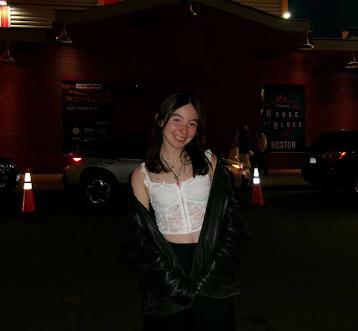


Major Health Science / Psychology
Graduating Spring 2027
Favorite Venue SummerStage in Central Park Tastemaker Since Fall 2024
Quote “But we don’t make the textbooks on our best behavior, do we?” - NIKI
Major Communications/Marketing
Graduating Spring 2025
Favorite Venue Drumsheds, London Tastemaker Since Spring 2023
Quote “yeah...no yeah, for sure"
Major Behavioral Neuroscience/Design
Graduating Spring 2026
Favorite Venue The Sinclair Tastemaker Since Fall 2022
Quote “Everything looks perfect from far away”
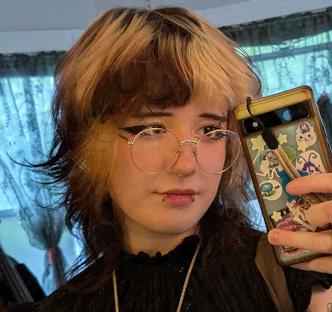

Major Computer Science/ Media Arts
Graduating Spring 2025
Favorite Venue House of Blues Tastemaker Since January 2024
Quote
"I can't believe I'm performing in a Starbucks right now!" - Fraxiom at AfterHour

24
Edgy Norwegian Teens and Black Metal: What it Means to Love A Deeply Sketchy Genre
From arson and murder to violent ideologies, Norwegian black metal’s dark legacy continues to haunt fans as they wrestle with the music’s undeniable allure.
Remembering David Lynch: The Sound of a Perfect Nightmare
David Lynch’s perfect nightmare isn’t just seen, it’s heard. We explore how his original scores and masterful use of sound became essential to driving the narratives in his films.
Prove It on Me: An Exploration of Queerness in the Blues
Tiny Desk’s Titanic Reach: How NPR Captured the Masses
Since NPR started hosting live music performances in 2008, their Tiny Desk series has slowly evolved into one of the most refreshing and amplifying sets in the industry.
Taste of Nostalgia: Partners in Crime
Rupert Holmes' Partners in Crime is more than just The Pina Colada Song—it’s a delightful journey with clever songwriting and quirky storytelling… and possible hopes of infidelity?
Dark Entries: A Gothic Rock Retrospective
In the late 1970s, an antiestablishment current ran through Thatcher-era England, festering beneath the surface and becoming the goth movement.
Discography: Madonna
A name and career that needs no introduction: Here’s a beginner’s guide to the legacy of Madonna. 12 14 17 20
Unearthing the gem of recent Grammy winner Doechii’s mixtape Alligator Bites Never Heal, “DENIAL IS A RIVER” gives an uninhibited view of Doechii’s journey leading to this moment. 26 29 32 36 38
From seedy speakeasies to the Harlem Renaissance, blues music has a rich history and role in the exploration of queer identities.
Alan Lomax: How Field Recordings Created Folk Heros
With his influence on artists from Muddy Waters to Bob Dylan, we take a closer look at an unsung champion of folk music: Alan Lomax.
Japan Rules Everything Around Me
The streets of Harajuku and Harlem have been in cahoots — a look at the artistic exchange between hip-hop and Japan that has shaped the culture for decades.
Dissects: DENIAL IS A RIVER
39
8
Taste of Nostalgia: The Who By Numbers
24
43
Released in 1975, The Who By Numbers captures a band in transition—grappling with fame, industry, and the changing tides of ‘70s rock.
Underrated: The 6ths
Stephin Merritt of The Magnetic Fields loves himself a side project. Here’s a closer look into what makes The 6ths different — and perhaps his best.
40 8 44
Local Talent: Megan from Work
With Boston Calling around the corner, Tastemakers sits down with Manchester, NH, band Megan From Work to talk about the group's beginnings and playing the festival in May
Album Reviews
Lambrini Girls, FKA Twigs, Kendrick Lamar, Charli xcx
Show Review
Something In The Way Fest
2 April
Role Model
March 16 @ House of Blues
He's not in Kansas Anymore, so come see Role Model at the House of Blues on March 16! If you want some songs to dance to with a side of heartbreaking lyrics, then you'd be stuck like "Superglue" to Role Model's setlist. You won’t want to miss this show, because there's “No Place Like Tour!”
Hannah Storer (Computer Science/ Game Development)
Tiffany Day
March 12 @ The Sinclair
For an evening filled with the perfect mix of indie and hyperpop, it’s “ALWAYS FUN” to see Tiffany Day on tour! Come see her perform her new album, LOVER TOFU FRUIT, at The Sinclair on March 12. “SIMON SAID” don’t miss out!
Emily Seitz (Health Science/ Psychology)
Lucy Dacus
April 20 @ MGM Music Hall
Let Lucy Dacus lead you to the floor, even if you’re not a dancer, at MGM music hall on April 20 and get a taste of her new album Forever is a Feeling!
Phoebe Moore (Psychology)
Movements
March 13 @ MGM Music Hall
Perhaps most well known for their emo, post-hardcore hits like “Daylily” and “Colorblind,” Movements has demonstrated their genre spanning range with a poppier indie rock sound on their 2023 album, RUCKUS!. Performing alongside special guest Citizen, their March 13 show at MGM will be a must see for fans of alternative rock — it’ll be sure to make you Feel Something.
Reuben Colten (Computer Science/ English)


Released January 10, 2025
Label City Slang
Genre Punk, Post-punk, Garage rock Tasty Tracks “Filthy Rich Nepo Baby,” “Love,” “Nothing Tastes As Good As It Feels”
2025 is not off to the rosiest of starts. With a U.S. president set on dismantling the federal government, wildfires tearing up the West Coast, and the globe growing hotter and hotter, the midpoint of this tumultuous decade has felt predictably dystopic. The pace at which social upheaval seems to be moving is torrid, so it may not be surprising that already, a fitting soundtrack to this chaos has emerged. Brighton, UK upstarts Lambrini Girls, made up of Phoebe Lunny (guitar/ vocals) and Lilly Macieira (bass), picked a ripe time to release their debut album after years of creating noise within the British punk scene, both through their unabashed sound and their political action off stage. The group’s blunt force attack continues on Who Let The Dogs Out, smacking listeners in the face with denouncements of misogyny, police officers, homophobia, and many other scourges on society needing to be put on blast. Lambrini Girls’ angry satirizations of society do not leave any room for audience interpretation or pithy metaphors. This quality may not always be a benefit, but it’s certainly one that the duo deems important — and it’s something they’re serving up whether you like it or not.
Take a guess what “No Homo,” “Company Culture,” and “Big Dick Energy” might be about. This is a fairly easy game you
can play with many tracks on this album. The duo streamlines their hostility into the most easily understood terms, revealing facets of their identity and their politics in one fell swoop and effectively discarding anyone who wouldn’t be on board with them right off the bat. Underneath the instrumental hood, however, the approach is deceptively not as straightforward. Lambrini Girls make the extra effort to not just deliver standard punk tracks copied and pasted from countless albums before theirs. Along with the core building blocks of aggressive drums, guitars, and bass lines, the duo leans heavily on a haze of distortion, fuzzing out their instruments and occasionally the lead vocals of Lunny, and throws in hand percussion and a few reggaeton inspired rhythms for good measure. It ensures that no matter what is happening on top of the songs, there will always be something vibrant to latch onto.
The atmosphere of the record is crisp, cutting-edge, and never drags the energy down. However, true enjoyment of this album will come down to one thing: Can listeners stomach the lack of subtlety in Lunny’s lyrics? It’s not always easy, not because anything she’s saying is so outlandish, but because the urgency doesn’t equate with the gravity of what’s being said. Lunny’s voice is pushed to the extreme on most tracks, and her feral screaming proves unmistakably powerful. Still, channeling that ferocity into relatively placid lines about how guys with “big dick energy” are lying about their size or how corporate workplace culture is toxic or going to therapy is “cunty” doesn’t exactly elevate the songwriting.
The opinions displayed will elicit agreement from many listeners, but likely groans as well due to their sheer simplicity. The worst offense comes on “You’re Not From Around Here,” where, mid-song, Lunny begins reading off what must be the dictionary definition of gentrification in an overly-preachy effort to grandstand about the harm it causes. For a project so deeply rooted in agitation to work, audiences need to buy into the credibility behind the anger and the artistry. Lambrini Girls certainly have one part of that equation worked out, but by framing their surface level observations as the most important revelations in the world, it can be easy to dismiss some of what they have to say as plain cringeworthy.
Lunny’s approach is more effective when she takes the absolute smallest step
back, adding another creative element to consider. “Filthy Rich Nepo Baby” falls into some of the aforementioned lyrical patterns, but the track’s candid humor shines through, particularly when describing someone who was able to generate industry buzz around his noise rock project because he has loose ties to Rod Stewart. Her refusal to deeply analyze that example and simply blurt out the obvious (“THAT’S ON FUCKING NEPOTISM!!!”) is done to strong effect. “Love,” underscored by a wall of distorted bass, sees her lyrics at their most contemplative. The song’s mission statement of “True love is nothing more than the wrong hill to die on” and all its following lyrics feel the least like they’re aimed at something and the most inward facing, especially when Lunny descends into a state of lovesick regret on the outro.
The unbridled mayhem of 2025 is not behind us, and probably won’t be confined to this year. In that case, expect Lambrini Girls to be there, stirring the pot with a high intensity. Who Let The Dogs Out is flawed, yet saddled with serious promise, as the duo shows a propensity for letting their ire let loose and dictate a high-voltage, highly creative album atmosphere. Though primallevel anger can only fuel the band so far, it’s gotten them in the door as a name to take seriously — now, it’s time to build off that.
Henry Bova (Journalism)

Released January 24, 2025
Label Atlantic Records
Genre Dance/Electronic Tasty Tracks "Striptease," "24hr Dog," "Drums of Death," "Room Of Fools"
FKA twigs' new album confronts her audience with a bold question: "Have you experienced Eusexua?" The genre-bending EUSEXUA explores the fulfillment people find both within the club and themselves. twigs describes the album as her "love letter to how dance music makes [her] feel." She pulls inspiration from dance music across decades to chase the thrill of the rave, yet restrains herself for moments of introspection and playfulness. On EUSEXUA, twigs’ palate is metallic and electronic, her hypnotic beats and melodies bringing listeners to an involuntary state of bliss.
The album's title track and lead single identify EUSEXUA as a sensation to search for in twigs’ music. She defines the sensation as "the blissful feeling of momentary transcendence evoked by art, music, sex, and togetherness." Or, more simply put, "Eusexua is the pinnacle of human experience," a mantra repeated throughout the album's rollout. Although the album has firm roots in dance music, twigs' experimental approach elevates EUSEXUA to reflect the depth of her doctrine. The album is as musically complex as it is intellectually stimulating, inspiring constant movement and reflection. "Room Of Fools" is an exaltation delivered from the center of a smoky dancefloor: "This room of fools / We make something together /
We're open wounds / Just bleeding out the pressure." Over a Björk-influenced track with pounding, desperate bass, twigs captures the collective relief found in music and dancing that overwhelms the spirit and senses, a disorientation key to experiencing euseuxa.
EUSEXUA is more than a concept or an album. It is a doctrine that twigs created to heal herself from the anxieties and traumas of life in the modern world. She invented movements to pair with each track of the album, which together compose "The Eleven," a "durational artwork" staged in Sotheby’s New Bond Street galleries. The eleven movements represent both album tracks and "practices" of eusexua that bring twigs' life more into balance. By infusing somatic healing techniques with music inspired by the spirit of "Prague's techno scene," twigs repurposes dance and movement as a method of regeneration.
EUSEXUA embraces the futuristic and hedonistic in lockstep with its healing nature. "Girl Feels Good" is an ode to female pleasure that takes after Madonna's Ray of Light. "When a girl feels good, it makes the world go 'round" she declares, demanding that the pleasure of women be recognized and respected. "Perfect Stranger" is an ode to the blissful anonymity and mystery of dancing with a stranger. "Let's love in words unspoken / And stay naive unbroken" she sings as she precludes true intimacy, already resolved to slip out of herself enough to invite someone in. The song is especially powerful when paired with its video where twigs shapeshifts into different personas and identities, inspired by her experience molding her personality to better suit her romantic partners.
As a set of commandments for the club, EUSEXUA allows twigs to explore the art of letting go. "Drums of Death" is a glitchy dare, edging the audience towards their destructive and haughty side. The technological production feels like a breakdown of the machine, introducing a tension the album uses to challenge and inspire the listener. "Shed your skin / Rip your shirt, flesh exposed / Feel hot, feel hard, feel heavy" feels like a revelation for twigs, a rejection of the discipline she's practiced since the beginning of her career. Although she is at the most practiced stage of her artistic growth, embracing her messiness was crucial to defy the conventions of the dance music that inspired her. "Childlike Things" is a silly and fun earworm despite the clunky and inexplicable North West feature that anchors
it. twigs manages to pull the gimmick off, distracting listeners with catchy melodies and vocal chops that provide enough inertia to see the song through. More importantly, “Childlike Things” highlights twigs' desire to capture the nonsensical ways that art is created, recruiting the ultimate nepo-baby to praise God in Japanese on a song with lines like "I've got supersonic powers that are polyphonic." It feels designed for the TikTokbrained, but instead of rejecting her artistic environment, twigs embraces it.
EUSEXUA perfectly balances empowerment and submission. On songs like "24hr Dog," twigs rests at the intersection of desire, identity, and the body. Her visceral lens depicts a yielding that only she could capture: "It's true, I'm just this way for you / I bend more than what I thought was possible." Her falsetto soars over ethereal, swelling production as she pleads for an opportunity to surrender, embracing her need to lose control to find peace. "Striptease" explores similar themes and is one of the most exciting moments on the album. twigs is breathy and dramatic, pushing her voice to bend and break as she delivers the song to its explosive finish. The last minute remodels twigs' desire into a chant escalating towards ecstasy: "Arch my spine, and just a shoulder / Titalises on me, I ride / You wanna read my every line and I don't mind."
As her most daring project to date, EUSEXUA is an inspiring entry into twigs' ever-evolving discography. Although EUSEXUA resists categorization, twigs' revolution in dance and electronic music demonstrates an expert's approach to vulnerability and experimentation. Her music's power is derived from her artistic and emotional discipline, including her ability to discard what she's learned about both. To experience euseuxa, twigs has one piece of advice: "If they ask you, say you feel it."
Joseph Brant (Political Science)
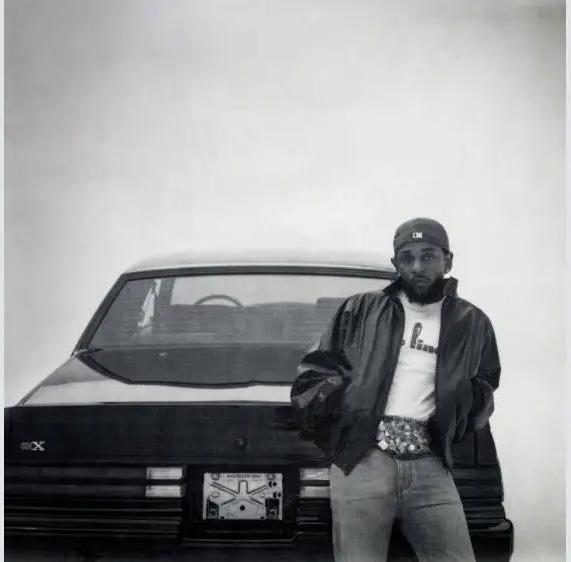
Released November 22, 2024 Label pgLang/Interscope Records Genre Hip-hop Tasty Tracks “reincarnated,” “luther,” “heart pt. 6,” “dodger blue”
Ten months removed from Kendrick Lamar’s high-profile feud with Drake, it's become evident that Lamar can reach greater heights than his contemporaries while operating on his own terms. The one-two punch of the unsettling “meet the grahams” and the playful-yet-hateful “Not Like Us” proved he didn’t need any promotion to get the world to tune in; putting out the music was enough. The summer-smashification of the latter claiming Drake’s typical hit slot was the nail in the coffin. After securing the chart-toppers, the raving music critics, the thinkpieces, and the Super Bowl halftime show, Kendrick Lamar had to shake up the music industry once again; this time, by surprise dropping his sixth studio album, GNX
Some fans and critics have labelled GNX as Lamar’s “pure rap” album — namely, one in the vein of hip-hop classics like The Chronic or The Blueprint, where he delivers energy and bars for the love of the game. To some extent, this is accurate. GNX is Lamar’s least narrative-driven project to date, and is much broader in its concepts and message. This might come as a disappointment to fans of the sprawling opus that is To Pimp a Butterfly or the narrative journey good kid, m.A.A.d. city. Make no mistake, however, GNX has much to say.
Perhaps the most significant thread
running through the project is the celebration of the West Coast that Lamar has championed throughout the year. Collaborators include several underground LA-based rappers, all of whom deliver solid-to-super features; Dody6 offers the strongest of these on “hey now,” coming out strong by matching Lamar’s nonchalant flow and trading bars about skateboards and the Joker. Established names appear as well. Rapper Roddy Rich contributes to the smooth “dodger blue,” and former labelmate SZA pops up twice. Her partnerships with Lamar have been consistent, and those on GNX are no exception — her soothing vocals glide perfectly over “luther” to provide effortless chemistry with Lamar’s musings. Equally strong is the production, led by Sounwave and longtime pop-producer Jack Antonoff. No West Coast hip-hop album would be complete without Mustard, who, fresh off the success of “Not Like Us,” returns to produce “hey now” and “tv off.” The influential producer even gets a shoutout in the form of Lamar’s battle cry of “MUSTARD!” on the latter. GNX puts its influences front and center – when Lamar posits “who put the West back in front of shit?” on the title track, it’s hard to make the case for any answer other than the one he offers – “Kendrick did it”.
The official video for “squabble up” features a book titled “How To Be More Like Kendrick for Dummies.” The fundamentals of what drives Lamar are the core of GNX, and the values that he has represented throughout his life are well transmitted throughout the project. For instance, take “heart pt. 6,” the latest in Lamar’s series that serves as a state-of-the-culture accompanying each of his projects. He reminisces on his career with Top Dawg Entertainment (TDE) across the track, and lays out the principles he values so highly; loyalty, ambition, growth, brotherhood, and appreciation for those who paved the way for him. Indeed, that idea of gratitude simmers below the album’s surface; both for his brothers at TDE and the greats of hip-hop. It feels like Lamar falls in love with hip-hop all over again on GNX, which is littered with references and nods to his influences. “man at the garden” is an homage to Nas, channeling his 2001 single “One Mic.” On the album’s intro, “wacced out murals,” Kendrick muses on how his relationship with Wayne has changed; “Used to bump Tha Carter III, I held my Rollie chain proud / Irony, I think my hard work let Lil Wayne down.” Referencing Lamar’s selection as the halftime
performer at the Super Bowl, he reflects on the uniqueness of the situation; his success seemingly threatening his longtime idol (Before his fame, Lamar released a mixtape featuring several instrumentals and freestyles over Tha Carter III ). “Reincarnated,” the album’s centerpiece, features Lamar rapping from multiple perspectives. He embodies several Black musicians throughout history over a Tupac sample before shifting to a back-and-forth conversation between himself and God. It's difficult not to compare the graceful sampling of Lamar’s biggest influence with the artificially-generated Tupac vocals Drake used to diss Lamar. Regardless, “reincarnated” is a career highlight that effectively utilizes Lamar’s storytelling abilities – impeccable as ever – to communicate his core values. In the final lines of the song, Lamar swears to God “I promise I’ll use my gifts to bring understanding” – with this album, he may well have done so. In playing faster and looser with GNX, Lamar sacrifices the overarching narrative that is typical in his albums. Though usually not an issue, the more informal nature of this project causes some of the weaker tracks to stick out more. For instance, “peekaboo,” though solid thanks to Lamar’s consistent rapping performance, features a relatively simple chorus that reiterates similar themes to other tracks on the album. Exacerbated by its placement near the end of the project, it feels less essential to the project as a whole. Mustard’s production on the aforementioned “tv off” is as crisp and bouncy as ever, but the beat feels derivative of the highly overplayed “Not Like Us.” Fortunately, Lamar’s humorous performance and delivery keeps the track afloat – preemptively prompting his doubters to “turn this TV off” come his televised Super Bowl performance.
Depending on who you ask, Lamar’s decision to release a more straightforward rap project is a copout, a masterclass, a rushed decision, or a cementation of his position as the greatest rapper alive. However you feel, GNX is proof that Kendrick Lamar’s rapping abilities are as strong as ever. This full-on West Coast release is Lamar rapping in its most fundamental form and excelling at it. Arguably, a project like GNX was something that was missing from his discography Hip-hop may have been on a decline lately; between the excitement of the feud and the release of GNX, it may be finally safe to say that Lamar has officially shaken the game back up.
Gabriel Barbier-Saiah (Criminology/ Psychology)

Tasty!
Charli xcx
Released June 7, 2024
Label Atlantic Recording Corporation
Genre Pop/dance
Tasty Tracks “Girl, so confusing,” “365,” “Everything is romantic,” “Talk talk,”
Reviewing an album months after its release is a bit like taking a test with the answer key right in front of you. By this point, it's clear the album has penetrated the cultural psyche and dominated the summer, guided by one overarching question: what is "brat"? Answers range from Kamala Harris to Pantone 3507C, each an attempt at unraveling the album’s true meaning and philosophy. Ultimately, BRAT is an album born to be the soundtrack of its author's experiences, providing the background for an evening out on the town and the rough hangover the morning after. Centered around a character that listeners could see themselves in, people connected with the universal emotions and experiences that populated the record. A bundle of anxiety, joy, and anger, BRAT is a 42 minute roller coaster through the trials and tribulations of a modern popstar.
Coming as Charli XCX’s sixth studio album, BRAT was her first album since changing labels; diehard fans predicted it to be Charli in her most eccentric and concentrated form. Bringing in her longtime collaborator A.G. Cook and The 1975 drummer/fiancé George Daniel as producers brought back the sound that Charli had previously teased out on tracks such as “Vroom Vroom” and “c2.0.” Each contained
a harsh sound full of hyperpop hallmarks like high-pitch plucks, distorted vocals, and squishy beats.
With BRAT, this sound is further refined and perfected, pushing the envelope of what mainstream pop can sound like. This is exemplified on the tracks “365”—which builds into a pulsing techno barrage complete with piercing scales and thumping bass—and “Von dutch” which utilizes a similar high pitched production and pounding beat. As a testament to Charli’s ability to successfully merge hyperpop influences with her rave background, “Von dutch” was released as the album’s lead single, providing a preview for the album’s unique sound.
Yet don’t let the bright neon green color scheme or ubiquitous references to cocaine usage fool you; while BRAT certainly doesn’t disappoint in delivering a more aggressive vision of music, the album contains an equally compelling narrative and emotionally complex central figure. This is most apparent on the tracks “I think about it all the time” and “So I” which offer her thoughts on motherhood and grief. Recounting a visit to a friend of hers who recently had a child, “I think about it all the time” finds Charli questioning if she wants to be a mother, or if she even has the time for it. With an ever demanding career and culture that judges women’s decision on motherhood regardless of choice, Charli is overwhelmed by the question and contemplates if she even wants a child, or if she just feels it's expected of her. At the same time, she’s found a true partner in her fiancé George, further prompting her to consider building a life with someone completely separate from her identity as a performer. “So I” is devoted to the late producer SOPHIE, a pioneering artist in the hyperpop genre and longtime collaborator. The track serves as a tribute to SOPHIE’s friendship with Charli with lyrical references to SOPHIE’s 2018 track “It’s Okay to Cry,” sampling the track as well. SOPHIE and Charli shared a vision of what pop music could sound like, and that vision clearly influenced BRAT, showing how important SOPHIE was personally and professionally to Charli even in death.
Permeating every song on the album is the concept of brat. The core philosophy of “brat” is being unapologetically yourself and rejecting others trying to tell you who you are. In this sense, it’s important to live your life not fretting what others think, and enjoying what makes you happy. This nonchalant “It girl” character created in the album adds
depth to the music when comparing how far Charli differs from her in real life.
Tracks like “Rewind” and “Girl, so confusing” are devoted to fixating on one’s insecurities and frustrations. On “Rewind” Charli sings of wanting to go back to a simpler time (echoing her track “1999” from 2018) before she was confronted with questions of her success in the industry or embarrassed about calling the paparazzi on herself. With “Girl, so confusing” the message is further explored to consider how people might perceive you, and the tendency to compare oneself to others. On the song, Charli wonders if an unnamed individual likes or hates her, but is ultimately stuck in her own head, feeding into her own anxieties and pushing away the people she resents. Being a pop star isn’t without hardships – trying to stay relevant and beloved – but it does have the perk of being able to call up the source of your anxieties to talk it out in song. Lorde adds to the remix to show the pain of comparing yourself to others and feeling you don’t measure up. Both of them felt forced to contrast and compete against each other, rather than realize they were suffering from the same pressures and anxieties.
The ultimate goal for a pop album is to firmly cement itself at the center of attention, and BRAT saturated pop culture in a way few records have. With an unorthodox concept and marketing, the album screamed authenticity in a time when people are increasingly fed up with companies and algorithms poorly trying to pander to them. The remix album further expanded on this vulnerability and honesty, as Charli brought in collaborators to deconstruct the way society forces women to compete while adding a sense of doubt to if the life of a pop star is as glamorous as it seems. While the contemporary references to AirPods and Lana Del Rey may grow dated in time, the social commentary and emotionally complex narrative will ensure the album remains relevant for years to come.
Being confident and indifferent to what others think about you might be what everyone strives for, but ultimately we’re held back by our anxieties and projections. With BRAT, Charli successfully communicates that she struggles with this too. Though she’s an icon, at the end of the day she’s still just a young girl from Essex.
Connor Bedell (Political Science)
In 2025, the most desired music venue in the country is not a massive football stadium or open-air festival arena. Instead, it’s an unassuming desk, hidden in the nook of a National Public Radio office in Washington D.C. Since NPR started hosting live music performances in 2008, their Tiny Desk series has slowly evolved to allow for some of the most refreshing and amplifying sets in the industry. The trademark stripped-back nature of the series has become highly desirable for musicians who want the label of “serious
artist” to showcase raw musical talent in a more acoustic, intimate setting. A feature on the series can catapult upand-coming artists into stardom, or serve as a platform for the most successful to prove that they are more than just their streaming numbers. Tiny Desk isn’t just notable because of its unique format; in the post-COVID media landscape, NPR Tiny Desk is some of the last musiccentric online content that still turns heads, with performance view counts that tend to eclipse those pulled in by all but the highest-budget music videos. It suggests something about the content consumers crave — and the current state of artist promotion and success.
The idea for Tiny Desk Concerts first developed from Stephen Thompson, NPR editor and contributor. While attending a concert, he was angered by the difficulty of hearing singer-songwriter Laura Gibson’s vocals over the noise of the chatting crowd. He mentioned this to Bob Boilen, a radio host of a music series at NPR, and joked that she should just perform at Boilen’s desk so he could better hear her. In April of that year, Gibson was invited to perform at the inaugural Tiny Desk performance, and the concert’s popularity with NPR staff and novel concept made it an instant hit. Soon, it was a recurring feature at the office. The earliest performers were similar in sound; indie folk-adjacent instrumentation which perfectly aligned with the set. The series would not branch out from these genres — so-called “hipster-infused indie rock,” as journalist Zachary Crockett described it — until the late 2010s.
It was around this time that the potential of these unplugged sets started to be realized. NPR began to bring in hip-hop acts, as well as jazz-influenced neo-soul groups, broadening the appeal of the series. Anderson .Paak and the Free Nationals performed an instantclassic Tiny Desk in 2016 showcasing his live rapping and drumming, and a year later, Daniel Caesar and H.E.R. delivered smooth and soulful vocal performances. This period coincided with a meteoric rise in popularity and the development of a
dedicated cult following. Some massive artists recorded Tiny Desk Concerts, like Tyler, the Creator, who arranged his transformative Flower Boy tracks in a new light with a jazzy backing band, or Mac Miller, whose monumental set in support of Swimming just a month before his passing remains transcendent to this day.
COVID-19 threw a wrench into every norm of the music industry, and the feasibility of Tiny Desk was no exception. The intrinsically intimate and close series was forced to adjust or fail, and their virtual programming was a success. Artists took the opportunity to record their sets accompanied with unique backdrops that showcased national pride and regional music communities. By introducing an opportunity for global artists to submit recordings, travel, and language barriers were broken down – from Tems’ opulent set in Lagos, to Puerto Rico’s Ozuna, who performed in a cabana bar studio decorated with home flair and Tiny Desk memorabilia. BTS performed a Tiny Desk from their favorite record store in Seoul, coupled with a live band of local talent. In a show of creativity and artistry, some performers mimicked the original set’s detailed background by adding easter eggs for eagled-eyed enjoyers; blink-and-you’ll-miss-it trinkets referencing song lyrics or inside jokes. COVID-era Tiny Desks could have fallen flat, but instead, working from home was the best thing that could have happened to the series. It became increasingly clear
that the physical desk in D.C. was not the heartbeat of the series; it was the joy that artists had in performing and the love for the “realness” that a Tiny Desk show demands.
Several years removed from the pandemic, Tiny Desk Concerts continue to enjoy a high level of success and cultural relevance. While the at-home format has been mostly retired, NPR brings it back on occasion for performers who can’t make the trip over to their American office. Recently, 82-yearold Brazilian music legend Milton Nascimento performed selections from his most recent project in his Rio De Janeiro home. It’s likely the only time those tracks will ever be played live — such an occurrence is a testament to the power of the series. This power extends beyond just singular performances; the extent to which Tiny Desk can sway ongoing music trends has never been more apparent. For instance, several rising stars of today can credit a part of their breakthrough to their Tiny Desk Concert. Chappell Roan’s over-the-top theatrics and visual commitment to the bit earned her instant recognizability, and Doechii’s wit and sense of humor was naturally diffused into her raps. Personality is one factor, but the stripped-back nature of the venue allows for their musical abilities to take a front seat — at the Tiny Desk, there is nowhere to hide a lack of skill. Talented artists can relax in the more laid-back environment,
and in the cases of the aforementioned performers, can lever their personalities to a greater audience. In the current music landscape, Tiny Desk encourages the idea that the pathway to success hinges on two factors — raw musical talent, and equally as important, authenticity.
BY RUPERT HOLMES

It takes quite the skillful lyricist to obscure the fact that you want to have an affair. Fortunately, Rupert Holmes is just that gifted of a songwriter. This delicate balancing act is exactly what turned “Escape (The Piña Colada Song)” into a smash hit upon its 1979 release. While “Escape” remains a well known song, lesser known is the full album it comes from, Partners in Crime, a record equally worthy of praise. Pressing play on the whole album lets you unwind and let the carefree sound envelope you.
"Escape” sets the tone for the album and is meant to put you at ease. In the background, you can hear the sound of waves gently crashing, beckoning you to breathe in and smell the sea salt. In pursuit of this relaxed atmosphere, the album shifts through a series of genres, first a soft lounge singer jazz sound, then pivoting to a disco dance floor bass line. While at first certain elements present on the production — such as an 8-bit video game sound effect on the song “Partners in Crime”— seem like they would be an odd fit, they end up allowing the songs to stand out and feel unique; neatly fitting within the overall laid back feel and providing a cohesive throughline across the songs.
Ultimately, the true strength of the album is Holmes' songwriting. He employs small details meant to paint a scene, such as on the track “Him” when he says “There’s a pack of cigarettes, not my brand/ sometimes the girl forgets, she forgets to hide them.” Slowly unfurling the narrative and presenting puzzle pieces allows the listener to comprehend the story being told and assemble the story on their own. Rather than simply blurting out that she’s having an affair, Holmes spools out these elements in the same way you might pick up on these details if you were the character in the song.
While infidelity is certainly a major theme featured on the album, not all of these relationships are doomed to end in sadness. The track “Answering Machine” is a comedic and clever story of a couple trying to propose to each other via voicemails, only to get cut off by the answering machine each time before they can say the all important words “I do!” It’s a song that is once again populated with cheeky lines and prose, such as the lyric “I stepped out to buy some dog food for the cat” that elicits at least a small chuckle when you first hear it.
“In You I Trust” closes out the album and gives it a strong finish. Serving as a perfect opposite to “Escape,” Holmes sings of a partner that he knows he can depend upon, appreciating their intimacy and honesty. When the world becomes so uncertain, Holmes can take comfort in his relationship, restoring your faith in the concept of love after numerous tales of short lived flings and secretive affairs.
The “Piña Colada Song” has stood the test of time because of its humor, laidback production, and rich storytelling. These same elements are present throughout the entire album. Shining a light on the rest of the project unlocks a treasure chest of equally compelling and blissful tunes. In the over 45 years since the album came out, most people are unfamiliar with the rest of his discography. This unfortunate reality overlooks the quality work present, full of a rich sound and lyrics that tell interesting stories beyond a simple chorusbridge structure. If given the chance, the whole album is truly worthy of a listen, allowing you to escape into another life, perhaps one where you like getting caught in the rain.
Tasty tracks: “Answering Machine” “Him” “In You I Trust”
Connor Bedell (Political Science)

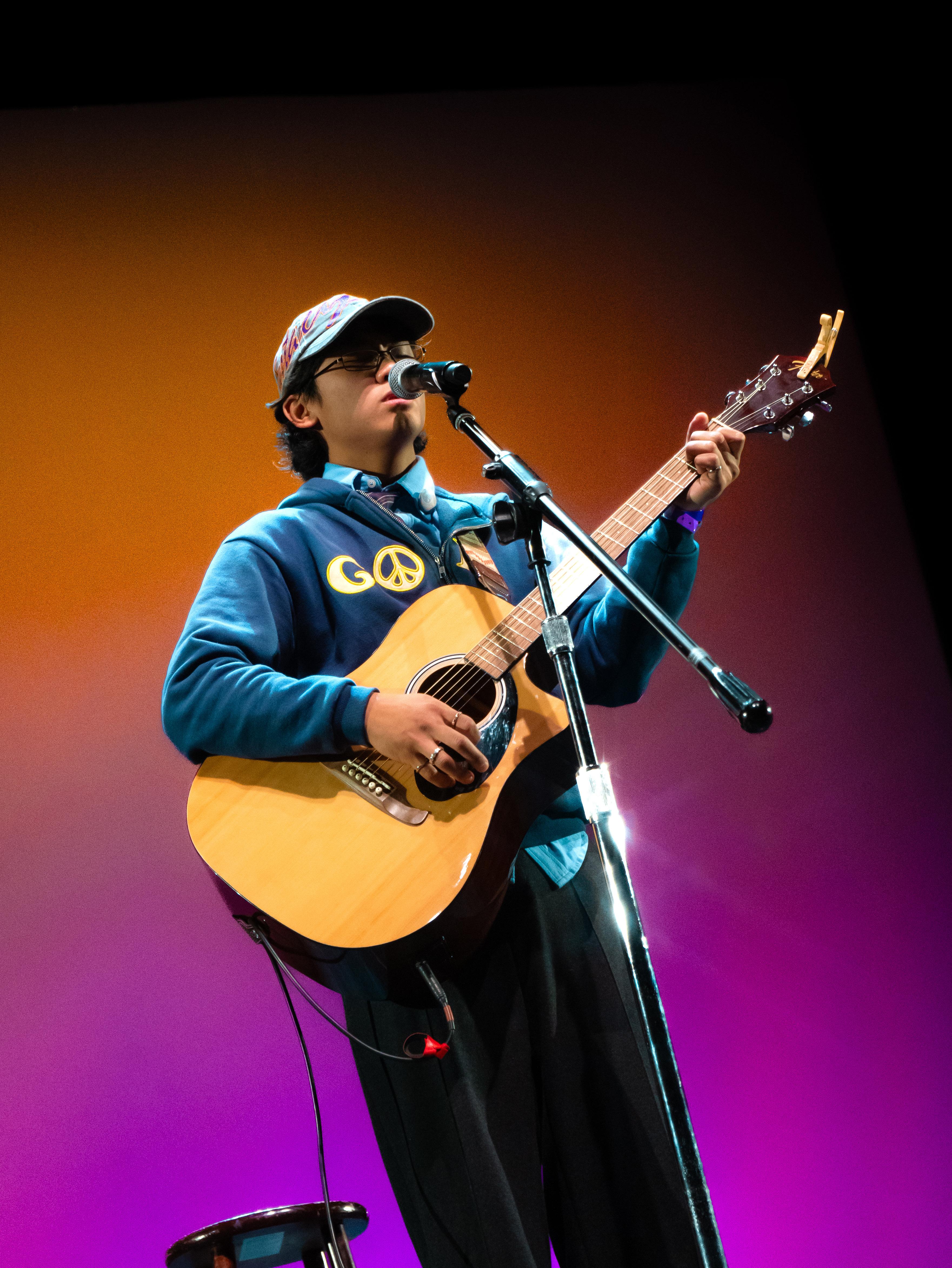

In the late 1970s, England was struggling. Unemployment was surging, and social programs were slashed under Margaret Thatcher’s administration. As the nation’s future darkened, the rebellious music of the past decade followed suit. From punk’s explosion in popularity grew a new, more experimental genre of post-punk pioneered largely by the band Joy Division. This band and their debut album, Unknown Pleasures, would set the groundwork for the most popular music subculture of the 80s: goth. The band’s gloomy and bass heavy instrumentation paired with frontman Ian Curtis’ deep and grandiose vocal delivery would provide the blueprint for the many bands that followed, and eventually define the aesthetic of the subculture as a whole.
While Unknown Pleasures flirted with the darkness, the 1979 Bauhaus single “Bela Lugosi’s Dead” fully embraced it. The track flies in the face of the punk ethos of the 70s. Where punk relished its furious brevity and in-your-face instrumentation, “Bela Lugosi’s Dead” is a ten minute long track driven mainly by its minimal drum beat and plodding bass. The echoing of distorted guitars ebbing in and out give the track an especially eerie feel, as if the band recorded it in an abandoned building. The lyrics of the track are especially theatrical,

centered around the death of actor Bela Lugosi—most well known for playing Dracula in the 1931 film adaptation. Vocalist Peter Murphy sings of bats and virginal brides mourning Lugosi with the dark and echoey register of a vampire.
“Bela Lugosi’s Dead” is often credited as the progenitor of the gothic rock subgenre, and it’s not hard to see why. The song is a blueprint for many of the hallmarks of the genre to come, such as the heavy bass, the echoey drums, and the deep, dark vocal delivery. The dark aesthetic Joy Division and Bauhaus would influence the sounds of many bands in the post-punk space like Siouxsie and the Banshees or The Cure that would later go on to define the genre as a whole.
Though originally a post-punk group formed in the late 70s, Siouxsie and the Banshees remain a pivotal piece in the development of gothic rock as a genre; their most notable contribution being their 1981 album Juju. The record has a chaotic energy to it, Siouxsie Sioux’s vocals are unhinged and yelpy while John McGeoh’s guitar work is erratic. To complement the haunting instrumentals, Sioux conjures images of severed heads, voodoo dolls, and witchcraft. In the lead single “Spellbound,” Sioux compares falling in love to being bewitched, having your body dance like a rag doll while laughter echoes through the walls. This tribal-esque horror is entirely unique to Juju, and its boldness has cemented it as one of the genre’s definitive pieces.
In 1980, the Banshees went on tour around England with support from a band that has since become a household name: The Cure. When one of the Banshees’ guitarists quit mid-tour, The Cure’s lead singer, Robert Smith, would play guitar each night in his place. On stage, he was influenced by the band’s darker sound and took that
energy to The Cure’s next three albums. This trio, consisting of the albums Seventeen Seconds, Faith, and Pornography, were a huge shift from their postpunk sound.
Pornography, in particular, is quintessential goth. The album embraces nihilism and abandonment wholeheartedly, while still capturing the horror and goth aesthetic that had defined the genre up to its release in 1982. The opener, “One Hundred Years,” begins with the lyrics “It doesn’t matter if we all die” and tells the story of a world in an endless cycle of pain and torment. Smith has said “The Figurehead” is about confessing his guilt on rainy nights to a human skull that he found in an abandoned asylum. Pornography’s brooding instrumental similarity causes the tracks to bleed together, creating a gothic atmosphere which is entirely entrancing and unescapable. The album might be the darkest goth gets, and ends in an impassioned cry from Smith: “I must fight this sickness!”
As gothic rock became a more defined genre in the early 80s, a club in Leeds called the F-Club began to provide a stage to artists that were embracing the style. Meanwhile, in London, a club named The Batcave opened as a space for goths to dance and saw regular attendance by celebrities like Robert Smith and Siouxsie Sioux. It is in these clubs where goth became a true subculture, unified by DIY black clothing and obsession with occult music. Goths would wear custom outfits adorned with leather, spikes, corsets and fishnets. Many wore white face paint to accentuate pale skin complexions, and hair styled after Smith or Sioux— messy, big, and unkempt—became popular. Amidst the financial oppression and urban decay of England under Thatcher, a community had formed to celebrate the spirit of being an outsider. To dress and listen to goth music was a form of resistance to the status quo and the popular music trends of the time. But the darkness did not last forever. The Cure took a hiatus following the release of Pornography and the departure of bassist Simon Gallup, which Smith spent playing guitar for the Banshees. When The Cure reunited, they had an entirely different sound rooted more in pop than gothic rock. After the tragic suicide of Ian Curtis, the members of Joy Division reformed under the name New Order
and leaned into a more synth-pop oriented sound. The Batcave closed in 1985 only three years after it opened due to reduced patronage. By the 90s, gothic rock had all but faded from relevance as the youth subculture shifted away from goth and towards grunge.
But to say that the goth subculture “died” would be to ignore the serious influence that goth fashion and music has had on popular culture, along with the countless goths still out there today. Immortalized in films like “The Breakfast Club” and “Donnie Darko,” the goth aesthetic has been popularized and repeatedly reproduced, albeit as little more than a stereotype. Musicians that make distinctly non-goth music, like Gerard Way of My Chemical Romance or Marilyn Manson co-opted goth stylings into their own image. While many goth bands broke up before the 80s were over, The Cure is still active today. Beyond releasing a much more ethereal and dreamier version of gothic rock in the late 80s with their record Disintegration, they recently released a new record in 2024, Songs of A Lost World. Unlike some musical subcultures, goth has been unwilling to fade from the public consciousness entirely. It seems that wherever there are the disenfranchised, there will be goths.
Jack Arseneau (Computer Science)



On Madonna’s debut single in 1982, she made her goal clear. “Everybody come on, dance and sing / Everybody get up and do your thing,”she sings on “Everybody,” turning pop into prophecy. By the zenith of her five-decade long career, Madonna Louise Ciccone had, in fact, gotten everybody to dance and sing. Over that timeframe, Madonna has released countless transformative songs, allegedly been excommunicated by the Catholic Church, and indisputably earned herself the title of Queen of Pop.
To this day, Madonna’s impact and fame is still felt throughout the world. She remains the highest earning female musician of all time, and she created the blueprint for pop stars to come. At the time of writing, Madonna is back in the studio with Stuart Price. She will likely release a new album in the next few years, but even if she never makes music again, Madonna’s fate and reputation are sealed. Her discography, comprising 14 albums over four decades, may seem intimidating. Use this as your guide as we walk you through Madonna’s best, most significant, and most interesting albums.
There’s a popular urban legend that says a teenage Madonna dropped out of school and moved to New York City with nothing but $35 in her pocket and a lot of ambition. She probably had much more in terms of savings, but the important part is that she moved to the city determined to “rule the world,” as she said in her first television interview. On her debut album, she introduces herself the way she knows best — through dance. Although the albums that would immediately follow were more financially successful and fine tuned, Madonna shows the fledgling Queen of Pop at her rawest, and most resolute.
Around the time she released her sophomore album, Madonna made a name for herself. At MTV’s inaugural 1984 Video Music Awards, she jumped out of a 17-foot wedding cake in showy, wedding dressinspired lingerie — the very same outfit she wears on the album cover. As she performed the scandalous title track, she danced and writhed on the stage, showing off much more than American audiences were ready for at the time. Madonna was officially on the map. Several songs from the previous year’s self-titled album made it to the radio and the charts, but “Like a Virgin” made it to No. 1. This album is not Madonna at her best; the songs are often unpolished and repetitive. However, the traits that made her into a megastar were already there: her wit, her reverence towards visuals, and her audacity.
Like a Prayer will probably be the album Madonna is most remembered for, and it might be her best. Madonna was notably



On Erotica, Madonna went too far, at least according to the general public. It was a concept album focused on sex and intimacy, and with it, she released her first book. “Sex” was a coffee table photography book where Madonna and an all-star cast including Naomi Campbell, Vanilla Ice, and Isabella Rossellini, are featured in soft pornographic photography, at times inspired by BDSM. The book, although financially successful, was a large source of controversy and overshadowed an excellent album.

Aided by seminal producer Shep Pettibone, Madonna evokes house music and New Jack Swing while singing about S&M, jealousy, and romance. For example, the title of “Deeper and Deeper” may imply indecency, but in actuality, Madonna chronicles her journey into learning to believe in love — she falls deeper and deeper the more that she knows about her partner. In the last minute of the song, she references “Vogue,” released only two years prior, showcasing a bold and ultimately prescient belief that the hit would stay in the public conscience. Unfortunately, the general public was not focused on the themes or artistry — they were too focused on the visuals.

“Erotica,” “Deeper and Deeper,”
After the commercial failure that was Erotica, Madonna was forced to backtrack, but that didn’t mean she couldn’t make light of the situation. A series of print advertisements promoting the album read “Madonna would like to tuck you in with her new album, Bedtime Stories. That’s tuck, with a ‘t’.” This was Madonna’s second release under her own label, Maverick Records, and she used all the tools at her disposal to ensure her return to relative decency would still make a splash. The album carries the same laidback tone as much of Erotica, but incorporates more elements of hip hop and R&B. Just listen to the Memphis soul beat on “Secret,” or Meshell Ndegeocello’s vocal and bass features on “I’d Rather Be Your Lover.” “Human Nature,” reusing lyrics from Like a Virgin’s “Express Yourself,” responds to the criticism she faced from her previous album: “Did I say something wrong? Oops, I didn’t know I couldn’t talk about sex.” Bedtime Stories is, and will likely remain, an overlooked moment in Madonna’s career, but it succeeded in getting her back in the public eye, and prepared her for the album to come.


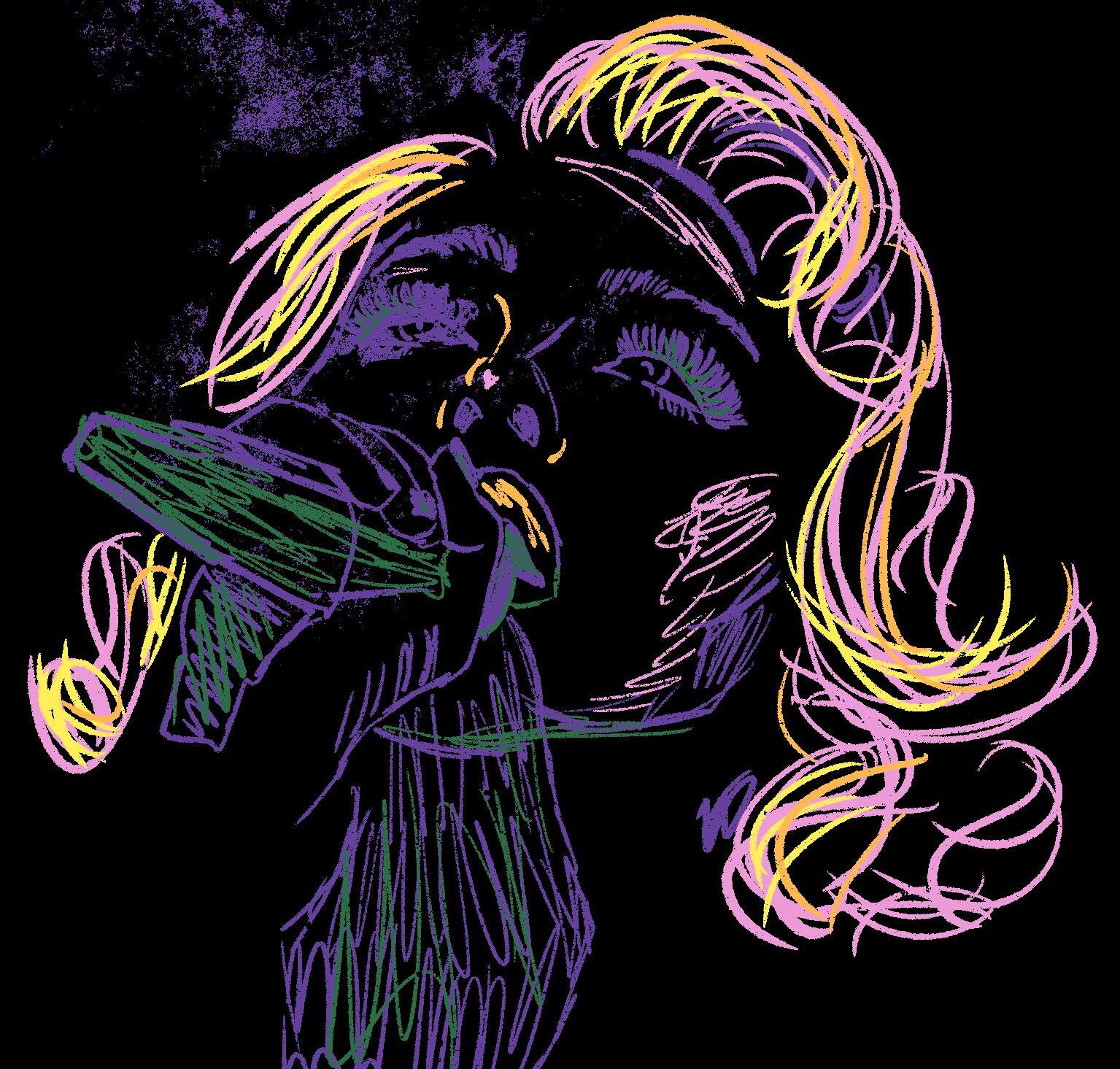

In the four years since her previous release, a lot had changed in Madonna’s life. She had taken vocal lessons for her starring role in the movie “Evita,” she gave birth to her oldest child with actor and personal trainer Carlos Leon, and she got super into mysticism — specifically, Kabbalah Centre. Kabbalah Centre was a prominent cult, nominally based around the practice of Jewish mysticism, and Madonna’s passionate embrace of it only made it more trendy throughout Hollywood. The good news is that the music she made during this time is fantastic. On Ray of Light, Madonna put her newly trained vocals and spiritual sensibilities to work. The album incorporated elements of trance music and trip hop, and the title track is a joyous, EDM-inspired tour de force celebrating the glee of freedom. The album earned Madonna four Grammys, and helped her stage a comeback at 39 years old, a feat nearly unheard of for a woman at that time.
Tasty Tracks: “Drowned World / Substitute for Love,” “Mer Girl,” “Frozen”

experimental, and it often pays off. Take “I’m So Stupid” and its frozen vocals in the pre-chorus, or the folktronica instrumentals especially potent in “Nobody Knows Me.” At its worst, however, the album reads as a millionaire finding out that poverty exists and feeling kind of sad about it. The latter half of the album especially lags, as Madonna falls into the trap of ballads about her parents, although she does manage




damage control. The natural solution, considering her largely gay fanbase and club kid background, was dance music. Working with Stuart Price, Madonna dyed her hair red, watched “Saturday Night Fever,” and got to work. The most notable result was lead single and opener, “Hung Up,” which samples ABBA’s “Gimme! Gimme! Gimme! (A Man After Midnight),” although she continued to channel her more eclectic interests. “Isaac,” for example, evokes klezmer music and features Yemenite Hebrew vocals from Kabbalah Centre scholar Yitzhak Sinwani. Intentionally or not, her humor shines through on “I Love New York,” where she declares “New York is not for little pussies who scream.” The album is a tight and intentional masterpiece in dance pop, and is clearly designed explicitly for the clubs. To this day, it is Madonna’s last cohesive album.
Tasty Tracks: “Sorry,” “Get Together,” “I Love New York”


The three albums that came out between Confessions on a Dance and Madame X were pretty rough. For 14 years, Madonna abandoned her identity as a trailblazer and devoted herself to chasing trends. She often found herself years behind the curve, and these albums aged terribly and rapidly. She changed her tune a bit with her most recent album, Madame X. It’s far better than her previous ventures, but certain risks and a bloated length make it ultimately uneven. Notably, her attempts to include Spanish lyrics and involve herself in political issues are awkward and out of place. The times when the album shines are when she truly leaves her comfort zone, like in the bizarre, mocking “God Control,” or the Tchaikovsky sampling “Dark Ballet.” The greatest thing about Madame X is that it sounds like a Madonna album. Unlike her previous endeavors, only she could have made this record.
Trevor Gardemal (Journalism)

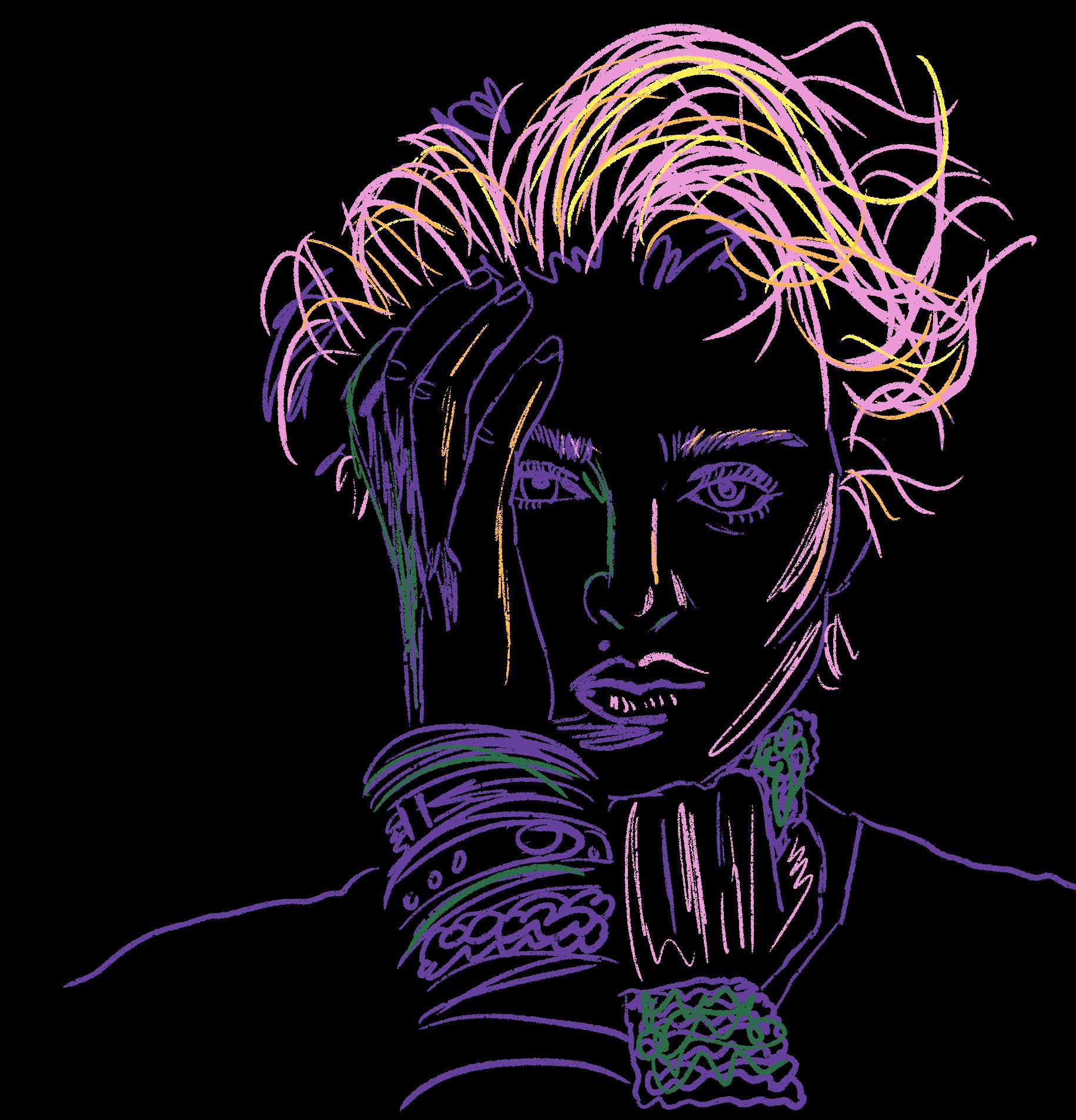

On the night of Aug. 10, 1993, record label executive and guitarist of black metal band Mayhem, Øystein “Euronymous“ Aarseth, was murdered. Two months later, his bandmate Varg Vikernes would be arrested and charged not only for the death of his colleague, but for the burning of multiple churches across Norway. Many fans and bands in the inner circles close to Oslo recount this as a pivotal moment in the implosion of the Norwegian black metal scene. While the event did come as a shock, the toxic social environment surrounding the black metal scene made an incident like this inevitable. Despite the numerous innovative bands in black metal, it is a hard genre for many to love due to the controversial figures prominent in the scene and for its status as a breeding ground for right-wing extremist ideology. Its legacy is plagued with hate crimes, arson, murder and promoting self-harm.
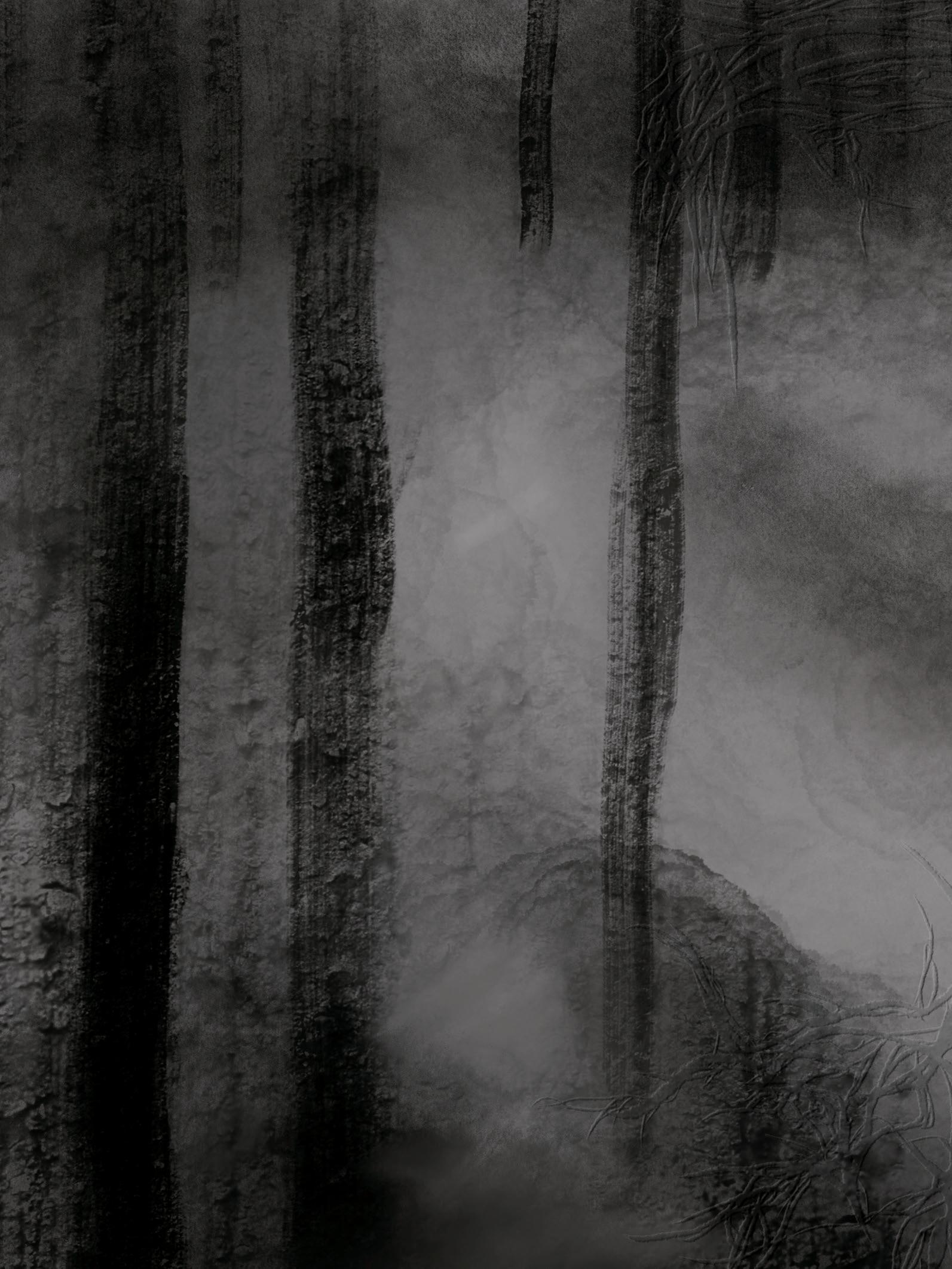
Content Warning: This article contains references to self-harm and extremist violence.
Norway’s black metal craze erupted in the early 1990s, building on sounds of thrash and death metal. What makes black metal so sonically engaging as a genre is its ability to combine its earworm-y melodies and ambient atmosphere with the tenacity to blast your face off. Its despondent themes, use of “corpse makeup” and references to paganism and satanism gave it well-defined aesthetics that created a dedicated fanbase. For example, Swedish band Dissection nailed the sound with Storm of the Light’s Bane. While bringing metal’s

characteristic rapid tempo, unrelenting drums, and fuzzy guitars, the riffs on this album feel truly epic. The songs evoke a sense of grandeur as if you were riding through the snowy forest depicted on the cover.
Burzum, fronted by the extremely contentious Vikernes, had a truly visionary sound, combining synths, powerful distorted guitar chords, and screaming vocals that were recorded on a headset microphone in order to create a unique ambient and grim soundscape.
Even for a genre as brash as black metal, the scene was violent and extreme. To understand the depraved psychology behind black metal, it is crucial to understand its most important figures. Euronymous’ band, Mayhem, was gaining notoriety for just how “extreme” they were. Certain members of the band’s personalities clashed with their newly recruited vocalist, Pelle Ohlin, known as Dead. As one band member recalls: “The first time I met [Dead], I got angry… I’m enjoying life, he did not… he slept with dead birds under his bed because he wanted to smell death.” Despite the discomfort of many bandmates, Dead’s obsession with death contributed to his image and the band’s image by proxy, furthering the popularity of Mayhem.
Euronymous, eager for success in the black metal scene, was known to constantly encourage Dead’s strange tendencies, even when he would harm himself on stage. Euronymous often got into physical fights with Dead, and was encouraging him to take his own life, which he eventually did in the house where he, Euronymous, and bandmate Hellhammer were living. Rather than grieving the incident, Euronymous used it as a PR opportunity for the band, photographing the scene of the death and publishing it as an album cover. He then pushed the narrative throughout the black metal community that Dead took his own life because black metal was becoming too commercial. With his newly boosted street cred, he started his label Deathlike Silence Production and record store, Helvete, which became the headquarters for the label. Profiting off the death of a bandmate, Euronymous had earned his status as the ringleader of the black metal revival scene.
As numerous Mayhem members left in disgust of Euronymous’ actions, Euronymous sought new members to join the band. One of whom was Vikernes, who was gaining acclaim for Burzum. Vikernes grew disgusted by Euronymous’ overwhelming power in the black metal scene, and craved this power for himself. He began burning numerous churches all across Norway, hinting to newspapers under a pseudonym that he did such acts of arson, and that he killed a homosexual man. The way Vikernes saw it, he truly represented the spirit of the genre, while satanism was just a marketing tactic for Euronymous. Eventually, in an attempt to cut ties with Euronymous, Varg drove to his apartment and stabbed him to death, and was arrested two months later. After release from prison, Varg would continue releasing music under Burzum and intensified his Nazism, constantly spewing propaganda online and contributing to a rise of fascism in metal to come.
The story of these men is laden with tragedy. Euronymous, Vikernes, and plenty others were compelled to commit arson and murder just to be perceived as legitimate in the eyes of fans. In a genre that prioritizes depravity, hatred, and death above all, inevitably those who strive for success the most will be driven to do condemnable things. The Norwegian black metal scene of the 90s reeks of constant pressure to out-Nazi one another. You can find documents online listing metal bands and the level of “sketchiness” associated with each one — half of them are just blacked out with the label “Nazi.” Until the COVID-19 pandemic, the Asgardsrei Festival
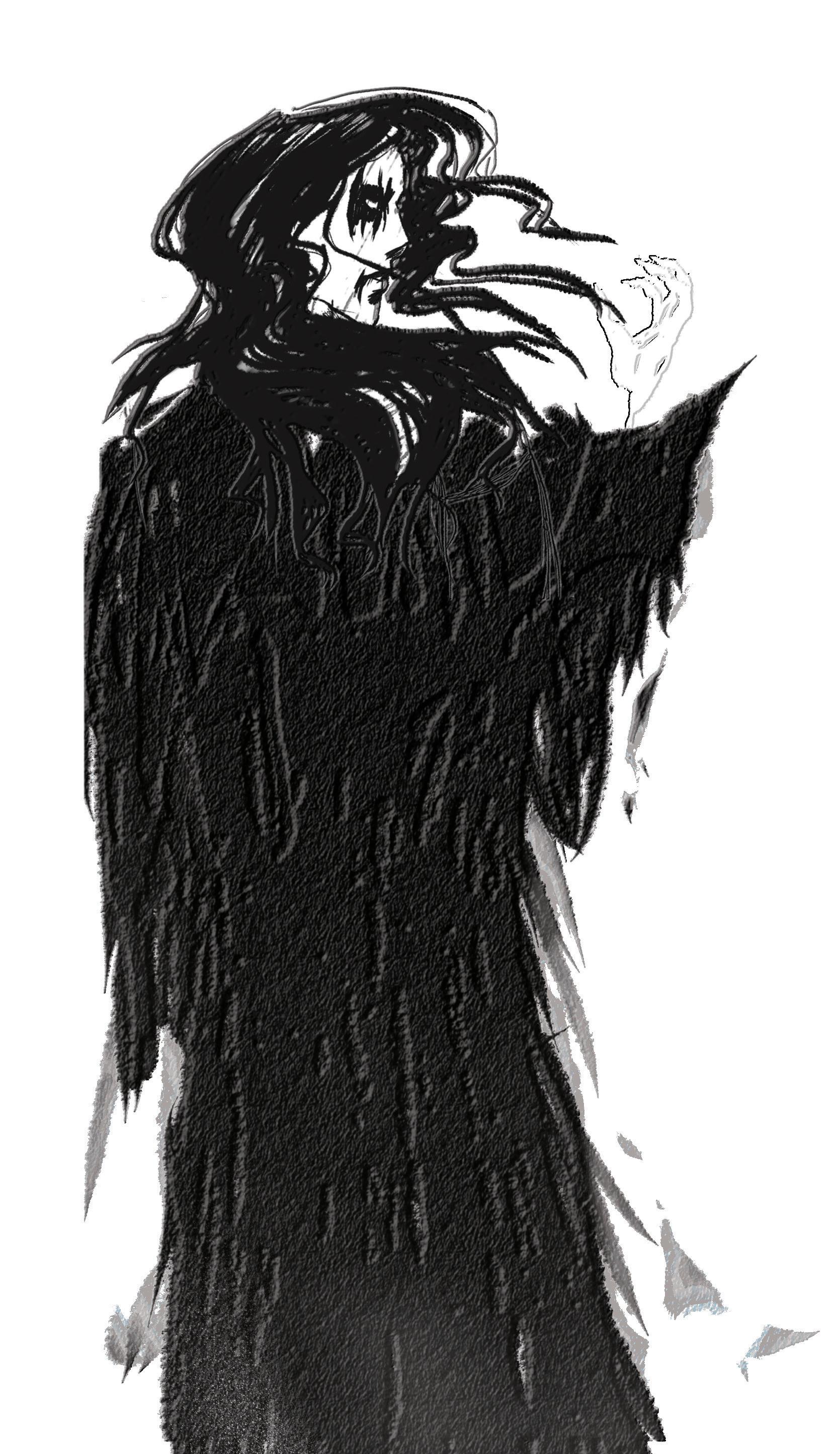
in Ukraine met yearly to perform metal music that rallied for white power and called for the extermination of Jews. All of this seems unforgivable, however, many music lovers today have continued to find a way to love black metal despite its gross history.
Some listeners contend with the internal conflict of enjoying black metal by listening with a critical lens. The music can offer a grim window into the psychology of some of the depraved people who make it. Norwegian black metal’s legacy and music serves as a reminder that egos and lust for power will lead to our own destruction, as it did for Euronymous and Varg Vikernes. There is so much to this music besides its gross blemishes: its bitter, frigid atmosphere, its gratifying melodies, and its sheer fervor. There is also an abundance of great black metal bands who are completely unproblematic or downright antifascist in their messaging, such as Ulver, Wolves in the Throne Room, Weakling and Murmuüre.
Whether listening to its problematic artists critically, or choosing to only listen to its safer artists, there is a lot to pull from black metal. If not for its dark aesthetics, at least for its innovative sound. From the tragic story of the Norwegian black metal scene, you can choose to take away a lesson in never letting pride control your actions, or ponder in how such revolting people can make compelling art. Or, you can choose to take away nothing at all and take in the awe-inspiring sounds of Dissection, Mayhem, and Bathory without thinking. How we choose to engage with problematic music is ultimately our own choice, but in such a complicated and immoral world — and a historically troubled genre — conflicted listening is inevitable.
Sam Pollak (Data Science / Economics)
What do our innermost dreams and fears sound like? We might know what they feel, but truly, what do we hear? David Lynch was the man with that answer. With his uniquely singular approach to creation, Lynch proved time and time again up until his death in January that he was not only a visual pioneer, but also a genius with sound and music innovation. Lynch is best known as a kooky yet heart-centered avant-garde filmmaker. He is the creator of the cult classic TV show “Twin Peaks,” as well as the director of the psycho-sexual detective thriller “Blue Velvet” and the first adaptation of “Dune.”
What sets his work apart from his contemporaries is not only his signature depiction of seedy American life, but also his intentional and pervasive use of music and sound in his films. Take, for example, his surreal Hollywood-based thriller Mulholland Drive. In a scene following the two protagonists, Betty and Rita, sleuthing in an abandoned apartment, Lynch implores a deep, whooshing grumble puncuated by eerie, ricocheting synths. The scene ends with the discovery of a dead body, but the sound alone is disturbing enough to scare an audience member way before the corpse is shown on screen. “Cinema is sound and picture both, 50/50, sometimes sound overrules the visual,” Lynch said in a 2024 interview with The Guardian.
Lynch was responsible for producing the music in all of his projects. His most wellknown work was as the co-composer of the “Twin Peaks” score. This soundtrack includes the theme song, which couldn’t be escaped in the early 90s. The show was a prototype for prestige television due to Lynch's insistence on a wholly original soundtrack.
The dramatic, almost overwrought musical composition of the show is best displayed in “Laura Palmer’s Theme.” This track is equal parts foreboding and tender, unfolding like a fever dream stitched together with dark synths that pulse beneath a fragile emotional surface. A lot of his music has an especially alien quality, like music from a world slightly akin to ours, like a dream. The instrumentals of “Twin Peaks” reflected
the cozy yet threatening atmosphere of the show's setting and themes. His scores were thoughtfully woven into storylines, acting like a narrator that would enter at significant plot points in each episode. Lynch’s focus on the story-telling elements of a score broke the mold of other programs at the time. Before “Twin Peaks,” TV music was meant to be stealthy, but Lynch championed the emotional effect it could add to the stories he wanted to hell.
Lynch’s approach to composition was solely rooted in his emotional state while developing a new project. His artistic process was one of meditation, believing that sinking into one’s inner consciousness could reveal ideas for storytelling. He was one of the largest proponents of transcendental meditation (TM), a mantra-based exploration of one’s subconscious.
Lynch was so inspired by the practice that he started the David Lynch Foundation, a nonprofit foundation dedicated to offering
TM sessions to at-risk populations facing traumatic stress. His foundation has resonated with many and Hollywood types swear by it, claiming it aids in unlocking their artistic abilities. Lynch hoped for every person to have the opportunity to explore oneselves for creativity, and rejected the notion that people need to suffer in order produce great work. Instead, he posited the opposite, often using Van Gogh as an example. “I don’t think it was pain that made him so great — I think his painting brought him whatever happiness he had.” Lynch told MasterClass.
Lynch believed that these mediations, and the mental state he’d arrive to, were the best way to access his creative side. He likened meditating to fishing. He believed that if you sit and wait, using your silence as bait, you'll be able to catch a good idea. He told Pitchfork in a 2012 interview that he believes these “ideafish” “carry with [them] a mood [and] sound is critical to making that mood.”
It would be unfair to attribute this only to Lynch, however. Without composer Angelo Badalamenti, Lynch’s longtime confidant, there would be no “Twin Peaks,” “Blue Velvet,” or “Mulholland Drive.” Lynch utilized Badalamenti as his co-collaborator in score and sound production for all of these projects. Lynch would describe specific scenarios to
Badalementi when composing his scores. When composing the aforementioned “Laura Palmer’s Theme,” Lynch instructed Badalementi to “play the sound of the darkness of a forest with owls flying in the sky.” Lynch perfected a method of sonically capturing deeply unsettling and vivid thoughts.
Lynch and Badalamenti’s last project together was the 2018 joint album Thought Gang. This album is a baffling marriage of free-form jazz and industrial rock. It stays true to the “Lynchian” notion of capturing his and Badalamenti’s inner hopes and sinister thoughts. The stretches of wailing saxophones, repetitive mantras, and horrifying atmospheric whooshes were “all apart of a large experiment,” Lynch told the Guardian.
He didn’t know if anybody would like him and Badalamenti’s work, but that didn’t stifle him one bit. When listening to this album, it’s hard to grimace at Lynch’s whiny and cartoonish voice. But don’t worry, he’s in on the joke. When he first heard a recording of his vocals, he laughed. “I started laughing so hard I felt a lightbulb explode in my stomach. I gave myself a hernia” said Lynch in an interview with the Guardian. Lynch marveled at the mix of pain and joy, which is his entire ethos. “Stories need to have dark and light, turmoil, all those things,” he told Pitchfork. Lynch’s aesthetic has made a lasting impact on many musicians. In Beach House’s
2012 Track “Wishes,” the band utilizes Lynch-style dreamy and soft vocals echoing with reverb. Sky Ferreira titled and wrote lyrics for her debut album Night Time, My Time from quotes of the 1992 film “Twin Peaks: Fire Walk with Me.” These are just two examples of a vast creative world Lynch broke open with is unique style, and there will be many more to be inspired. While he may not be here on earth anymore, his sonic legacy lives on in perpetuity.
Thomas Paulus (Cell and Molecular Biology)


It's 1925 and the "Mother of the Blues," Gertrude "Ma" Rainey, is under arrest for hosting a lesbian party in Chicago. The following day, the “Empress of the Blues" Bessie Smith — Ma Rainey's protegé and rumored lover — will bail her out of jail and set the industry abuzz with gossip. Three years later, Rainey will release "Prove It on Me Blues," a reply to the rumors about her sexuality. In the jazz clubs, theaters, and speakeasies of the Harlem Renaissance, a new ethic and style of music emerged, giving voice to experiences and personalities that were distinctly queer.
"Prove It on Me Blues" is neither a declaration of pride, nor is it a denial. Rainey embraces the gossip in an unprecedented way and challenges the audience to recognize her sexuality. “Went out last night / With a crowd of my friends / They must have been women / Cause I don’t like no men,” sang Rainey as she leaned into the scandal. Rainey's confident approach to the chatter about her sexuality signaled the accepting nature of the blues, amplified by her stature as matriarch.
Blues music combines over a century of field hollers, work songs, spirituals, chants, and narrative ballads sung by African Americans. Typically structured around cadences that can be traced to traditional African music, blues music plays with a lilting, walking bass to inspire a call and response effect. Early blues music was often loosely narrative, encompassing feelings as varied as despair, raunchiness, and hopefulness. It thrived in live venues, creating an atmosphere that welcomed connection and community. These clubs and speakeasies became hubs of expression in cities like Memphis, Chicago, and New York throughout the 20th century, attracting entertainers and audiences alike to slip into the trance-like feeling that blues music fosters.
Although blues music emerged in the 1860s from the culture of African American slaves in the Deep South, the blues evolved through the tradition of vaudeville, a genre of theatre that was most popular in the United States from the late 1880s to the 1930s. Vaudeville theater consisted of comedy without strong political, moral, or social messaging, commonly featuring a series of unrelated acts involving singing, dancing, and ventriloquism.
The genre bridged economic classes despite maintaining strict practices of racial segregation. Black vaudeville performers worked in an entirely separate circuit from white ones, as white performers commonly replaced Black ones by dressing in blackface to act out crude, racial stereotypes. Yet, many of the songs sung and

popularized by white performers were written by African American musicians. By infusing vaudeville with their experiences and talent, Black performers laid the foundation for the popularity of genres like jazz and blues and set the stage for the explosion of creation and resistance that fueled the Harlem Renaissance. These genres were used by artists who wrote their own songs and lyrics to tell stories and reflect on the African American experience.
The Harlem Renaissance and similar movements in cities across the nation afforded queer people the freedom to practice openness and take ownership of representing their own sexuality. Blues clubs and speakeasies became the fertile ground for exploration of queer identities. As they came up in the world of vaudeville, performers like Rainey and Smith were trained in tent circuses and theatres before they found success as blues musicians, giving them a spontaneity that other artists lacked.
Many blues artists of the time went further than Rainey's loose embrace of lesbianism in their music. Lucille Bogan, another important figure in the queer history of the blues, released "B.D. Woman's Blues" in 1935. "B.D." stood for "bulldagger" or "bull dyke," popular slang terms of the time used to refer to lesbian women. Bogan was well-known for her bodacious and raunchy lyrical style. "B.D. Woman's Blues" personified her directness as she sang "Coming a time, B.D. women ain't gon' need no men." Bogan's declaration is especially interesting when paired with Kokomo Arnold's "Sissy Man Blues," originally recorded in 1934. Although the song straddles a problematic relationship with heterosexuality, Arnold's lyrics capture the complexities queer desire within the constructs of the 1930s: "Lord, if you can't send me no woman, please send me some sissy man." Bogan and Hannah's dejection from heterosexuality perfectly demonstrates Blues musicians' boldness in sharing their experiences as black, and sometimes queer, people during the twentieth century. In the words of Henry Louis Gates, literary critic and historian, the Harlem Renaissance was “surely as gay as it was Black."
Blues music also offered opportunities to experience gender in public spaces in new, profound ways. Frankie "Half-Pint" Jaxon was a well-established and well-enjoyed female impersonator who worked regularly in Chicago and Atlantic City in between traveling with vaudeville troupes and jazz bands. Jaxon's performances are reminiscent of modern day drag, enchanting audiences who were open to non-conforming gender expressions and willing to blur the line between fantasy and reality. Jaxon was much more than a tourist

attraction or subversive entertainer, he rubbed shoulders with iconic figures like Duke Ellington and Bessie Smith. In Jaxon's crowd favorite song “I'm Gonna Dance Wit De Guy Wot Brung Me," he sang both the female and male parts, mirroring the duality of the performer's life experience. Jaxon served in the army for a year and achieved the rank of sergeant, meaning he was no stranger to traditional masculinity despite his talent at female impersonation. After retiring from show business, Jaxon re-entered another repressive environment while working at the Pentagon. Jaxon's dual experience of gender demonstrates the blues' unique ability to provide an oasis for people who longed to explore or experiment.
Gladys Bentley was another musician whose blues performances reflect the importance of early exhibitions of queerness. Bentley was a blues singer and pianist who launched her career under the stage name Bobbie Minton in Harry Hansberry's Clam House, a notorious Prohibition-era New York City speakeasy. Bentley was openly lesbian and wore men's clothes, often performing alongside drag queens while singing with her signature growl in a top hat and tailcoat. In Harlem's Unagi Club, Bentley sang about "sissies" and "bulldaggers," flirting with women in the audience from her place on the stage. Uncompromising in her sexuality in a way that was uncommon for the time, Bentley would often perform popular songs while adding a sexy, playful twist.
Due to the shifting legal landscape of queer life during the early twentieth century, Bentley was more than familiar with the repressive laws imposed upon people who crossdressed or engaged in public "homosexual behavior." Bentley was even forced to carry a special permit from the federal government to dress in men's clothing and faced frequent discrimination for her sexuality and gender expression. In 1933, Bentley found herself to be the subject of a case before the Manhattan Supreme Court. The owners of Harry Hansberry's Clam House sued her in an attempt to stop her from taking her music to Broadway. Hansberry and his co-owner, Nat Palein, claimed that by shifting her performances from the club where she got her start to the bigger stages and audiences of Broadway, she was breaking a five-year contract that gave them ownership over her songs. The case caused the Supreme Court to perform a review of the obscenity of Bentley's music and the blues singer was criticized by the Broadway community. After speakeasies began to decline due to the end of Prohibition,

Bentley moved to Southern California and focused on her career as a pianist, earning wide acclaim and the title of "America's Greatest Sepia Piano Player." Yet she never experienced the same level of success performing in the more exclusive clubs of the West Coast. Bentley's transgressiveness was best received in New York City speakeasies, as the blues clubs that followed the end of Prohibition often implemented dress codes and were frequented by whites. Sadly, during the McCarthy era, Bentley claimed to be "healed" of her lesbianism by taking female hormones in an essay she wrote in 1952 titled "I Am Woman Again." Although blues artists could be unabashedly comfortable with their own sexuality, they were still subject to the danger that living an openly queer life could cause at the time.
Blues music's intertwined relationship with the Harlem Renaissance allowed for an easy transition for the genre into the Civil Rights Era. Embodying the spirit of the Harlem Renaissance, blues served as a vessel for sharing both hopeful dreams for the future and chilling records of the racial violence and division experienced by African Americans. Billie Holiday's "Strange Fruit," a protest song that condemned lynching, was so powerful it earned the scrutiny of the federal government. Musicians like Billy Strayhorn, an openly gay composer and pianist who worked with Duke Ellington for nearly thirty years and composed some of Ellington's most well-known songs. Strayhorn was a friend to Martin Luther King, Jr., so it seemed only natural that he arranged and conducted "King Fit the Battle of Alabama" for the Ellington orchestra in 1963 for My People, a historical revue and album dedicated to King.
Blues music allowed artists and audiences to inhabit their dreams and explore themselves in unprecedented ways. From bold stage performers like Rainey and Bentley to musicians like Strayhorn, blues music gave Black and queer people opportunities to exist in a space that welcomed and celebrated their culture and existence. Although blues music has faded in popularity in recent years, its legacy continues to influence musicians to be open to new methods of expression and creation.
Joseph Brant (Political Science)

James Mangold’s “A Complete Unknown” was a sensation. The film, starring Timothee Chalamet, is a biopic of the early days of Bob Dylan, from his start as a wanderer in tinpan alley through his groundbreaking 1965 Newport Folk Festival set, where Dylan went against the wishes of the historically acoustic festival and played a loud, electric rock ‘n’ roll set. Say what you will about the quality of the film, but its impact has already been large, as it introduced younger generations to the lives and catalogs of the likes of Dylan, Joan Baez, and Pete Seger among others. Only time will tell, but the film carries the chance to bring on a folk revival, impacting the sound of popular music similar to how the Coen Brothers’ 2000 film O Brother, Where Art Thou? brought bluegrass and folk into the mainstream. If it does shape music in that way, then Mangold would follow not only in the footsteps of the Coens, but of folk music’s greatest champion from decades ago, Alan Lomax.
Lomax’s career first began in 1933 while serving as an assistant to his father, John, a folklorist studying the music, stories, and traditions of American culture. Many other folklorists studying at universities like Harvard, Columbia, and Oxford believed the days of folk culture were over; the cities around them were the bustling hubs of economic and societal activity. However, the Lomaxs, hailing from the then-humble
town of Austin, TX, knew a different world. Instead of burying themselves in pages of manuscripts and traditional ballads, the Lomaxs chose to hit the road and explore the culture going on around them. John first did this alone, mostly collecting history and songs from the West, but in 1933 he brought Alan along for the journey to the East, towards the Deep South and Appalachia.
Outside of a few major cities, electricity in the area was a rare commodity, meaning much of rural life was not unlike what it had been for centuries prior. The Lomaxs saw in that region places to find and record information about the lives of everyday people — as well as their music — without the filter of what had been deemed “important” by prior historians.
The Lomaxs made frequent stops at local prisons, especially work camps. The men who populated these prisons had grown up in a society that was stacked against them. Most of their ancestors had been slaves, and when finally freed, the vast majority found themselves only marginally better off, working as sharecroppers on the very same plantations. The laws of the country at the time were meant to hold them in place, but this did not break their musical spirit. Chain gangs working on farms and railroads were known to sing in order to keep their work in rhythm and pass the time.




It was on a visit to a Louisiana penitentiary that Alan and John discovered Leadbelly, someone they instantly clocked as a special musician. Not only could he play the guitar impeccably, but he had a near encyclopedic knowledge of folk songs, specifically those originating in prisons. After recording him and presenting their findings to state officials, they managed to convince Governe Oscar Allen to free Leadbelly, and from there, his music career began to take off. While Leadbelly’s relationship with John eventually soured, Alan continued to work with him, recording not only his songs but a spoken history of his life. Through his work with Lomax, Leadbelly would reach international audiences, becoming one of the first African American artists to tour Europe. Despite his 1949 death, audiences didn’t soon forget him. All over America and Britain, artists popped up who were influenced by his sound, eventually leading to the development of rock ’n’ roll. His impact didn’t just come from his sound, though, as his catalog of folk songs such as “Midnight Special,” “Rock Island Line”, “Where Did You Sleep Last Night,” and plenty more spawned covers across multiple genres of music. While Leadbelly wrote some of these, most were traditional songs, many of which lacked other recordings or even written lyrics. Without Lomax’s dutiful and continuous recording of the songs, they may have been lost to history.
Leadbelly wasn’t the only artist discovered by Alan Lomax, and he may not even have been the most influential. On his 1941 visit to the Stovall plantation, he stumbled upon McKinley Morganfield, a local blues player. Lomax immediately recognized the man’s talent, and from the trunk of his car, recorded songs and an interview with the man. While the recordings served mainly as historical records and did little to promote Morganfield to a wider audience, they did enlighten Morganfield on his own talents. Two years and another Lomax recording session later, Morganfield would set out for Chicago as Muddy Waters. In Chicago, Waters reshaped blues, moving further from what existed on the plantation, and closer to what would eventually become rock ’n’ roll. Like Leadbelly, he spawned many covers from the likes of Led Zeppelin and The Doors. and his song “Rollin Stone” even provided the name for a music magazine, one of Bob Dylan’s biggest songs, and a certain band. That band owed Lomax for more than just Muddy Waters as well. The Rolling Stones’ 1971 Sticky Fingers featured “You Gotta Move,” a song first popularised by Mississippi
Fred McDowell. Like Waters, McDowell was a farmer who played music on weekends until Lomax made recordings of him while traveling the south, the success of which led to him becoming a full-time musician. McDowell played a different type of blues, hill country blues, which is a highly localized genre to a small region of Northern Mississippi and Southern Tennessee. For decades, it lacked the recognition of the blues played further west in the delta. Lomax changed that, and after McDowell’s recording success, other players received contracts as well. The stylings of hill country blues never gained a huge following, but that didn’t bother Lomax. Success for himself or those he recorded was never his priority, he simply sought to preserve their culture for following generations.
By the end of his career, Lomax had recorded tens of thousands of hours of folk music. He’d helped turn complete unknowns into some of the most successful and influential musicians in history. Dylan, Seger, Baez, and the other mid-century folk artists all got into that music because of his work. He helped to organize and plan the Newport Folk Festival from the very beginning, often pushing hard for lesser-known artists to receive as many if not more slots as their more famous counterparts. The very same 1965 Newport folk festival that Dylan made infamous featured gospel groups from all over the country, blues players from the rural south, and even ex-prisoners performing work songs.

the title ironic, but to a few musically inclined prisoners, it must have been infuriating: The song contained multiple samples of Mississippi prison workers, recorded by Alan Lomax.

Now, two decades after his death, his works still inspire artists from a variety of genres. Producer kujobeats used a sample of “Early in the Mornin’” off of an album Lomax recorded in a Mississippi prison to create a beat that has since been used by rappers Mike Dimes and $notz. kujo said he was drawn to the piece because it shone a spotlight on the unlawful imprisonment and forced labor of African Americans in the U.S. Just this January, prisoners in California were used to fight the fires in Los Angeles. They were imprisoned in a state in which former Vice President Kamala Harris had served as attorney general for six years; a tenure during which she had fought to keep state prison populations high. Imagine their feelings, then, when Harris chose Beyonce’s 2016 smash hit “Freedom” as her campaign song in 2024. Most of them probably just found
92 years have passed since his first field recordings, and in that time, much has changed. By and large, someone like Alan Lomax is less important in the musical world — every day, millions of people are preserving music and culture via the Internet. Still, not everything changed. In a few select places, the same social conditions he recorded in still exist. Though Alan Lomax forever changed music, his struggle to fight for social justice and change the world still persists.




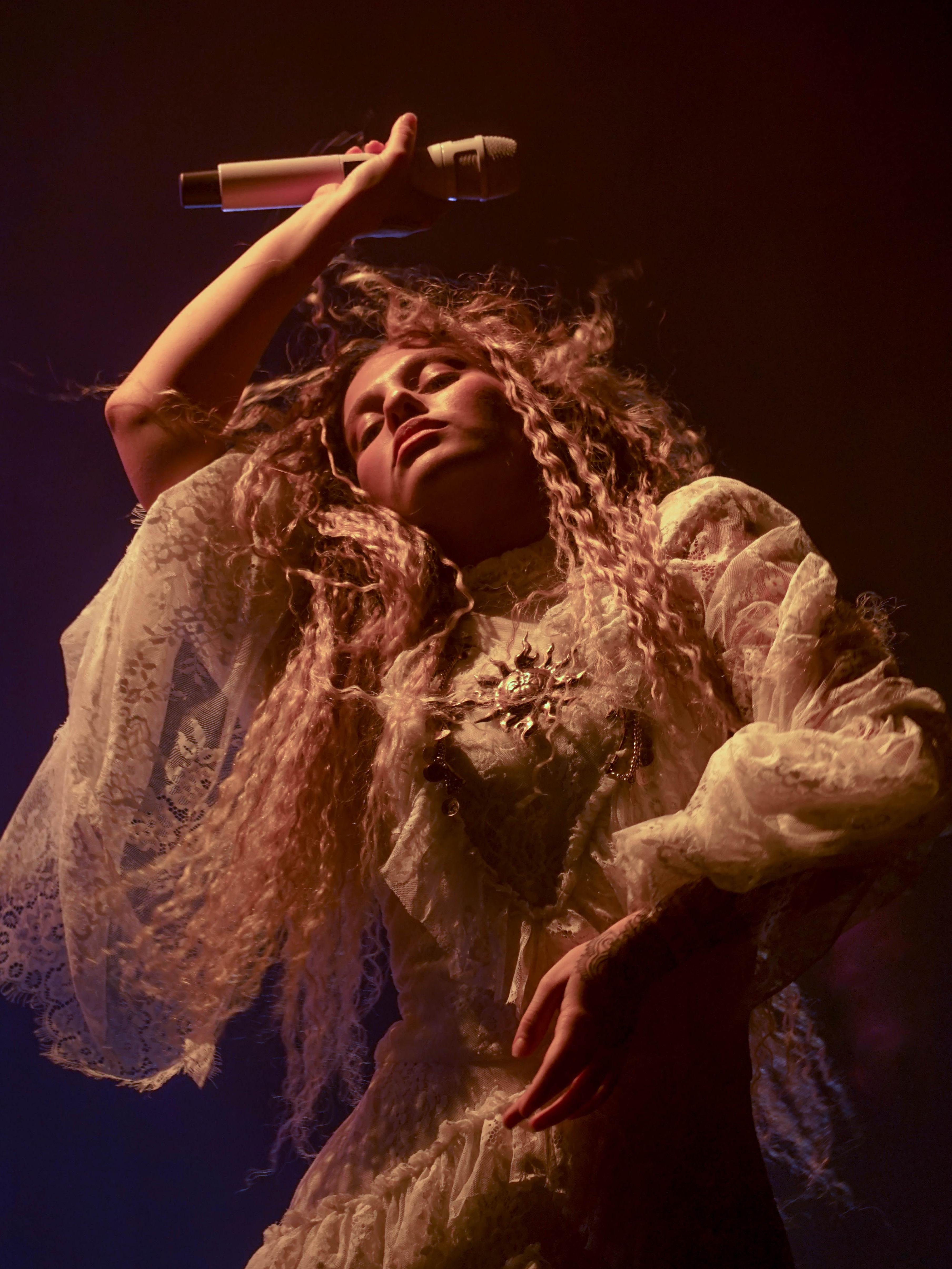


Born in the Bronx at a 1970s backyard party, hip-hop has since eclipsed its humble beginnings and become one of America’s strongest cultural forces. Touching everything from sports to fashion, art, and politics, hip-hop’s cultural capital is worth its weight in gold.
DJ Kool Herc, Grandmaster Flash, Melle Mel, and Afrika Bambaataa are credited as the founding fathers of hip-hop. But Afrika Bambaataa shares this credit with the Japanese musicians that shaped the genre, therefore beginning a legacy of cultural exchange between America and Japan.
This began with Yellow Magic Orchestra. YMO was a techno kayo band, also known as Japanese synth-pop, formed by Haruomi Hosono, Yukihiro Takahashi and Ryuichi Sakamoto in 1978. YMO took Western perceptions of Japan in stride, with “Yellow Magic” referring to the West’s transfixion with deeming the East exotic. But, they had sounds up their sleeve the West had yet to fathom. Early adopters of synthesizers, sequencers, and drum machines (specifically the Roland TR-808), YMO were also unconventional samplers, using sounds from Japanese media, video games, and traditional instruments, such as gamelans.
While scouring for records in NY, Bambaataa was drawn by the cover art of their 1979 album Yellow Magic Orchestra. Their use of the Roland TR-808 inspired the synthetic bones of “Planet Rock” — a song trailblazing producer Rick Rubin would describe as “One of the most influential songs of everything.” At the time, “Planet Rock” had no identifiable genre, but it was later marked as a precursor of electro music. This commotion not only caught the eye of Bambaataa, but has since been sliced and diced by artists like Michael Jackson, J Dilla, Mariah Carey, Deee-Lite, and Arca.
In the early 1980s, Hiroshi Fujiwara, a scrappy trailblazer of the Harajuku punk scene, visited NYC and fell in love with hip-hop. He brought back the sounds of Afrika Bambaataa and Grandmaster Flash to Tokyo’s nightlife. He taught local DJs how to scratch the records, and brought hip-hop’s steez and baggy silhouettes to Harajuku fashion. Some years later in 1996, Brooklyn’s Notorious B.I.G. sauntered into photojournalist Shawn Mortenson’s shoot. He took a liking to Mortenson’s jacket and borrowed it for the shoot, opting to toss it over his shoulder since it was too small to fit. The later infamous jacket was made by Nigö, creator of The Bathing Ape — more iconically known as BAPE — and member of Japanese hip-hop group Teriyaki Boyz. Nigö calls Fujiwara, now heralded as the godfather of streetwear, his mentor.
Fujiwara emerged as the kingpin of a group of creatives that birthed the ura-Harajuku scene — better known as Urahara, meaning “the hidden Harajuku.” While BAPE rose to global prominence, peers like NOWHERE, UNDERCOVER, SK8THING, and NEIGHBORHOOD’s fusion of avant-garde Tokyo street culture spiked with British punk and American hip-hop remains at the core of streetwear today. Urahara has on-record inspired Shawn Stussy of Stussy, Virgil Abloh of Off-White, James Jebbia of Supreme, and Kim Jones of Fendi — and off record, millions more. Japanese streetwear continued to make appearances on early adopters like the Wu-Tang Clan and A Tribe Called Quest. Yet, its connection to hip-hop remained relatively dormant until 2002, when Nigö met Pharrell Williams. Soon, Japanese fashion was seen on the backs of
every rapper. Soulja Boy’s Crank Dat boasted, “Haters get mad ‘cause I got me some Bathin’ Apes,” while Kanye West’s 2007 hit Stronger captured the craze with the line, “So go ahead, go nuts, go apeshit / Especially in my pastel, on my BAPE shit.” Cemented legends were giving shoutouts to Japanese denim, with Jay-Z in “Show You How” (“Evisu jeans cover the rectum”) and The Game in “Higher” (“Monkey jeans, Polo fleece”). Emerging crews from the West and East Coast, Odd Future and A$AP Mob, were early adopters of Japanese high fashion in rap. Style-obsessed members like A$AP Rocky, A$AP Ferg, A$AP Nast and Tyler, the Creator have all dabbled in archival collecting, designing, and, above all, influencing.
Japan’s influence on hip-hop reached new heights with Kanye West, who has cited his deep admiration for Japanese fashion, art, and architecture which profoundly shaped his creative vision. The simple, utilitarian codes of Japanese clothing became the blueprint for West’s Yeezy line — a cultural juggernaut that came to define fashion of the 2010s. His frequent visits to Japan introduced him to the work of Takashi Murakami, the contemporary artist behind the whimsical, pop-art-inspired cover of Kanye’s 2007 album Graduation Murakami even directed the music video for opening track “Good Morning.” West also holds an appreciation for manga and heralds

Katsuhiro Otomo’s groundbreaking cyber-apocalyptic film “AKIRA” as his “biggest creative inspiration.”
Hip-hop was one of the first Western subcultures to co-sign anime and manga. In the 90s, the Wu-Tang clan were amongst the first to embrace the art form. Ghostface Killah released a video for his single “Daytona 500” composed of clips from the 1960s anime Speed Racer. In 2001, RZA made one of hip-hop’s earliest anime references on “Must Be Bobby,” rapping “Sit in the sun six hours then I charge up like Goku / "Dragonball Z"; imagine you’re raggin me.” The masked villain persona of MF DOOM is heavily inspired by Japanese anime antiheroes and Ishirō Honda’s Godzilla. Kanye West’s 2007 music video for “Stronger,” directed by quintessential hip-hop video director Hype Williams, borrows its visuals from West’s beloved “AKIRA.” Anime references, particularly to Dragonball Z, were peppered throughout hip-hop tracks of the early 2000s. By the 2010s and beyond, these nods became omnipresent, seen in the work of Frank Ocean, Lil Uzi Vert, XXXTentacion, Childish Gambino, Juice Wrld, Chance the Rapper, Soulja Boy, Nicki Minaj, Drake, and Megan Thee Stallion among many others. However, the two forces have a more symbiotic relationship. Manga artist Takashi Okazaki’s love for hip-hop led him to create the Afro Samurai series. This later became adaped into a miniseries and film which were soundtracked by none other than RZA and the Wu-Tang Clan.
"Samurai Champloo", a 2004 anime series that saw great commercial success, blends traditional elements of Japan’s Edo period with hip-hop music and culture. The accompanying score was done by American and Japanese hip-hop musicians, principally Japanese producer Nujabes, whose blend of hip-hop, soul, and jazz evolved into the lo-fi hip-hop genre.
The tastemakers of hip-hop have continually looked to Japan for what’s next. This decade-spanning artistic exchange has ignited a cultural feedback loop, setting global trends within music, fashion, and art. In just nearly 50 years, the underbelly of Japan’s creative scene and the outspoken voices of American hip-hop formed one of the most captivating and influential forces pop culture has ever seen.
• Ananya Chaudhari (Economics/Business Administration)
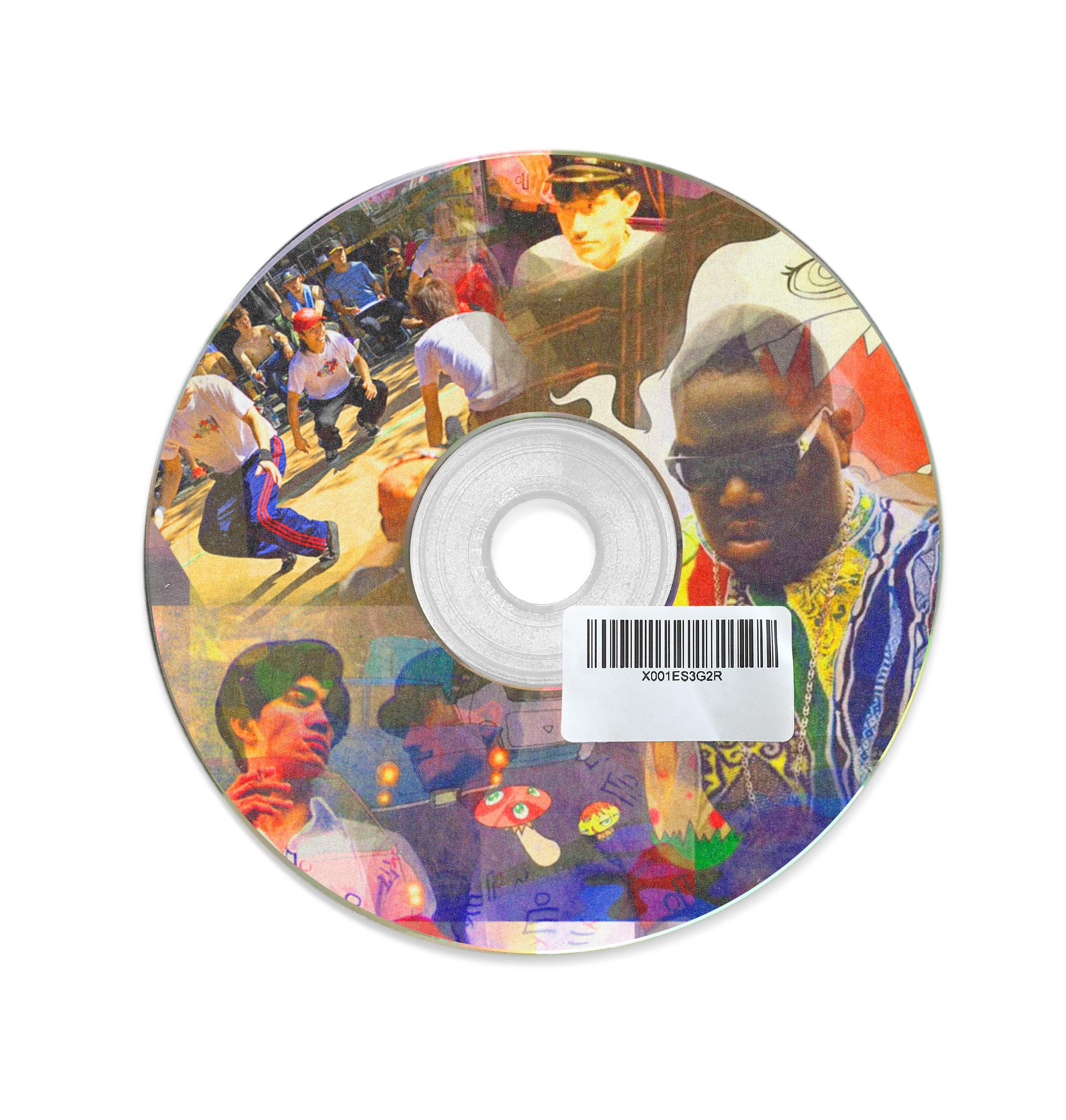


As far as pop culture moments go much as when radio and talk show host, and former Northeastern alum Wendy Williams, once notoriously declared, “Denial is a river in Egypt, your husband is gay” on her show “The Wendy Williams Experience.” The moment has since reverberated across the internet, and “denial is a river” has become a popular phrase to describe when one turns a blind eye to reality. Singer and rapper Doechii referred to this feeling in her 2024 single “DENIAL IS A RIVER,” a chronological retelling of her career and the moments when she refused to acknowledge her lowest points.
The track, which appears on Doechii’s latest mixtape, Alligator Bites Never Heal, arrived during a monumental year for women in rap. Megan Thee Stallion kicked the year off by taking shots at several key players in the industry on “HISS,” which skyrocketed to the top of the Billboard Hot 100 and provoked a heated, convoluted response from Nicki Minaj. British rapper Ceechynaa’s single “Peggy” became her first entry on the UK singles chart after going viral on TikTok for its vulgar lyrics, flipping the script by objectifying men the way male rappers have historically done to women. Memphis-based rapper GloRilla produced multiple commercially successful singles, including “TGIF” and “WHATCHU KNO ABOUT ME” with Sexyy Red, both of which were praised for being self-assured and braggadocious.
Breaking free from the mold is a recurring theme on Alligator Bites Never Heal. “DENIAL IS A RIVER” is unique in that it does not attempt to provoke listeners or utilize hit-making formulas that have worked in the past. Following the strong performance of previous songs like “What It Is (Block Boy),” Doechii’s creative interests clashed heavily with those of her label executives, who wanted her to make music that could achieve similar success. The need to produce to industry standards eventually pushed Doechii to prolonged periods of substance abuse, who, at one point, revealed she could not make music without being under the influence. Doechii created Alligator Bites Never Heal as an exercise in trusting her instincts and making music without outside pressure.“DENIAL IS A RIVER” is perhaps the best culmination of these efforts.
Doechii opens “DENIAL IS A RIVER” with a conversation between herself and her therapist alter-ego, a returning character from her

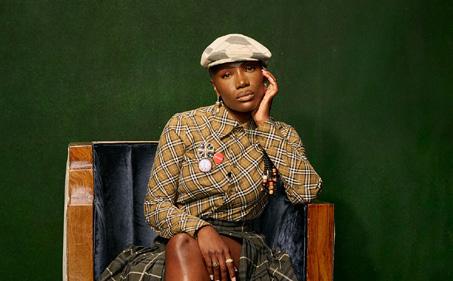
Oh the Places You’ll Go. The therapist confronts Doechii about the extended period of time between when they last spoke, implying that Doechii was not forthcoming in her music released up until that point. Doechii, who is doing whatever she can to push down the negative emotions harbored inside her, initially pushes away from the therapist, but ultimately begins to open up.
What follows is an emotional tug of war within Doechii, torn between allowing herself to break down and pretending nothing is wrong. After revealing that her partner cheated on her with another man in 2019, the therapist invites her to communicate how that made her feel, to which Doechii responds, “Nah, fuck it.” When she admits to feeling creative burnout in 2021, she dismisses the idea of taking time off by saying, “We ain’t got time to stop / The charts need us.” This chain of thought continues until Doechii’s facade finally cracks in a blunt admission: “I’m going through a lot.”
As she continues to unravel, reveling in the vices that help mask her emotions, Doechii’s delivery shifts from one of dismissal to one of aggravation. Her words punch the air when she says, “I ain’t a killer, but don’t push me,” and by the end of the third verse, she growls while threatening to mash someone’s guts into soup beans. The therapist intervenes before Doechii escalates the situation any further, and the song concludes with a Doug-E Fresh-inspired breathing exercise.
Sonically, “DENIAL IS A RIVER” strips it down, giving Doechii the center stage. A simple chord progression, deep bassline, and snappy hi-hat provide enough of a beat for Doechii to ride comfortably. Still, it does not overshadow her lyrics, forcing the listener to chew on every word she spits out. When the instrumental does change, it helps punctuate the lyrics further, like when the beat cuts out as the therapist confronts Doechii about her drug use.
A central struggle in Doechii’s journey has been making music that feels authentic while being under pressure from her inner circles to make music geared towards charts or TikTok buzz. “DENIAL IS A RIVER” is compelling evidence against playing to the interests of others, helping her secure the Best Rap Album award at the 2025 Grammy Awards and becoming one of her most commercially successful singles to date. It’s a beautifully executed culmination of pure wit, humor, and brutal honesty and is sure to become a staple in her growing discography.
• Jackson Laramee (Journalism/Communication Studies)
Released in 1975, The Who By Numbers captures The Who at a crossroads. The album marks an interesting point in the group’s career, directly following a series of three consecutive rock operas which remain among their most revered albums ever released. Though it was not met with nearly as much commercial and critical acclaim, By Numbers may be an opera in its own right.
The album portrays a troubled Pete Townshend who, upon turning 30 during its production, struggled with loneliness and addiction. 10 years earlier, Townshend declared, “I hope I die before I get old.” While grappling with the realities of aging, coupled with alcoholism and a strong sense of artistic obsolescence, Townshend brought The Who By Numbers to a more introspective place than his previous work.
The Who By Numbers focuses on Townshend’s relationships. “However Much I Booze,” one of the album’s strongest cuts, depicts Townshend’s relationship with alcohol in a bleak light: “Have to drench myself in brandy / In sleep I’ll hide / But however much I booze / There ain’t no way out.” The song is structured around an infectious electric guitar motif but leans more on Pete’s acoustic guitar, as is the case with many songs on the album. This level of introspection is part of what makes The Who By Numbers such a unique album, not just in the band’s catalog but also among rock releases of this era. In “How Many Friends,” he contemplates his relationships with others, considering how many of his friends would accept his not being straight, all through an empathetic vocal performance by Roger Daltrey, a drum part that is more fill than beat, and John Entwistle’s embrace of the bass’s upper tessitura.
With much less definition by the signature up-tempo, anthemic sound
that proceeded and followed it, The Who By Numbers sacrifices synthesizers for accordions and pulsating power chords for elaborate fingerstyle guitar parts. The group demonstrates their knack for writing rich, full-bodied harmonies with songs like “Dreaming From The Waist” and “Imagine A Man.” To be sure, Keith Moon’s playing is not much less disjointed and evocative than on previous albums, but his parts are less forward than most of the band’s earlier work. It’s this musical divergence that gives fans the chance to hear the band in a different light, making the album one of the Who’s most unique. But that’s not to say that By Numbers is a complete departure from the boisterousness of The Who’s earlier work.
“Slip Kid,” which, on the surface, depicts a draftee heading off to war, is a warning for young people entering the music business. Originally intended for Lifehouse, the song brings an unrestrained energy that’s on par with cuts like “Bargain” and “My Wife” from R, which rely on Daltrey’s unique rasp, Entwistle’s intricate yet memorable bass lines, and Townshend’s distorted rhythm and lead playing.
If “Slip Kid” is the most raucous song The Who By Numbers has to offer, let “Blue Red and Grey” be a testament to the band’s versatility. A true earworm, “Blue Red and Grey” is among the album’s most memorable tracks, relying on just Townshend’s ukelele and Entwistle’s French horn to convey the feeling of security that love brings. In Townshend’s words, “So long as you are on my mind / Every moment has its special charm” The gentle vocal delivery, lush brass arrangement, and up-beat emphasis on the ukelele make it the most unique song off the album.
Inarguably, “Squeeze Box” is the most popular song on The Who By Numbers and
among the band’s most well-known singles. Unlike any other cut from the album, it remains a live staple for both Daltrey and The Who. Thematically and compositionally, “Squeeze Box” is reminiscent of earlier singles like “I’m a Boy” and “Pictures of Lilly,” reminding listeners that Townshend had not lost the songwriting wit that first garnered The Who chart success in the mid-1960s.
The Who by Numbers is often regarded as the band’s last great album, and while it isn’t as groundbreaking as Tommy or dynamic as Quadrophenia, The Who’s virtuosic playing and Townshend’s versatility as a songwriter are apparent throughout.
The group’s choice to step away from the texture of Who’s Next and Quadrophenia, which drew upon distorted guitars and novel synthesizers, makes By Numbers somewhat of a breath of fresh air that emphasizes musicianship and composition rather than performance and arrangement.
• Luca Williams (Political Science/ Economics)
On the first day of Boston Calling, festival attendees are likely to be drawn in by the Luke Combs and T-Pain's of the world, but they may be struck with a jolt of pop-punk energy, crunchy guitars, and lofty choruses. That would be coming from Megan From Work, the raucously fun band from Manchester, NH consisting of Megan Simon (rhythm guitar/vocals), Joey Martin (bass), Luis Hernandez (lead guitar), and Alex Ruscansky (drums). On the heels of the 2024 album Girl Suit, which combines the cheery vocals of Simon with more forlorn lyrics surrounding gender identity and relationships, the group’s profile has been growing within the New England music scene, and they’re looking to put out new music in the interim while working another guitarist into their live show.
Ahead of their largest show to date and forthcoming recorded material, Tastemakers sat down with 3/4 of the band to talk about Megan From Work’s beginnings, their coworkers’ opinions on their music, and the nervous excitement surrounding Boston Calling.
This interview was edited for brevity and clarity.
TMM: How long have you all been playing together?
Megan Simon (MS): Since August of 2023. I got booked on Hope Fest in Salem, Massachusetts, and I needed a band and it came together within like a week. I had asked Joey and then Luis was like, “Hey, if you’re still looking for a guitarist, I’d love to play with you.” And then Alex messaged me out of the blue, “Yo, you looking for a drummer?” It was like a dream team assembled out of nowhere.
TMM: What made the group stick together past that just one gig?
Joey Martin (JM): For me, it was never a question. I was just like, “Oh yeah, this is who I play with now.” The gigs just kept coming. Alex Ruscansky (AR): I second that.
TMM: What inspired the band name?
MS: I work in the service industry, and I was working at a pizza place and for your staff meal, you had to put in a first and last name just to get the order in. I put “Megan” first name, last name “From Work.” And my chef was like, “if you ever have a project or anything, you should totally call it that.” And I was like, “That’s so weird you say that, ‘cause I need one right now.”
TMM: My next question was going to be have any current or former co-workers weighed in on your music?
MS: Yes, yes. Everyone that I work with has Megan From Work stickers and Megan From Work pens, and they’re like, You are Megan
From Work.
TMM: For those who haven’t heard you, how would you describe your sound?
MS: Live shows are definitely high energy. We have a lot of fun on stage and the songs really lend themselves to that experience. Everything’s really up tempo. We get called power pop, but I think we’re just fun, punky alt rock.
TMM: Talking about your album, was there anything you kept in mind while putting all those songs together?
MS: My mission statement was punk rock

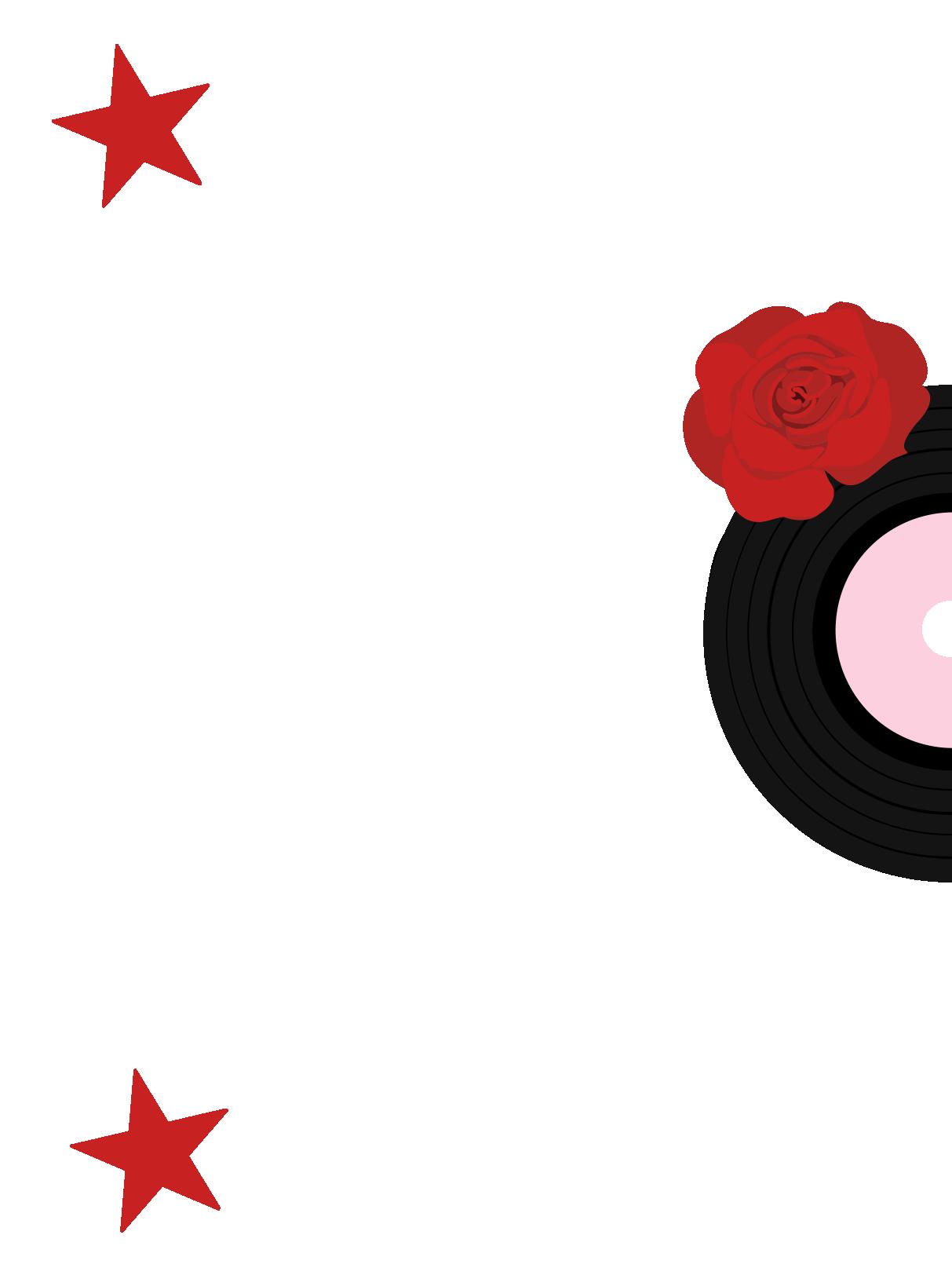
Sam’s Town, which is The Killers’ second album and my favorite album of all time. A lot of the synth that I put on the record was inspired by them, and it feels like a diary entry from a very specific time in my life when I was like coming out and figuring a lot of things out about my identity as well.
TMM: Talking about Boston Calling, what was your reaction to finding out you got a slot?
MS: We definitely all were in disbelief. We’re just like, “this is so unreal.”
JM: It sounds kind of like a joke, you know? It’s like “Oh yeah, we’re playing
Boston Calling.”
AR: Yeah, that’s not real.
MS: We found out December 10th, but we couldn’t announce until January 6th.
TMM: Did you tell anyone during that time?
MS: I told one coworker at our Christmas party, and then they told all of my other coworkers. I didn’t tell [the rest of the band] this because I didn’t want you to be mad at me because I was like, don’t tell anyone. And then suddenly a room full of like 40 people were like, we have to make an announcement. I was like “You really cannot do that!”
TMM: Is there anyone you’re sharing the bill with where you’re really like “Oh my God, I can’t believe we’re playing the same day as ___?”
JM: Sheryl Crow’s kind of nuts.
MS: Don’t take mine, Joey! Sheryl Crow 100%. Whether or not we’re playing, I’m like “We’re going to see Sheryl Crow!
AR: TLC is pretty crazy too.
TMM: Is there anything you’re particularly nervous about?
JM: For me, it’s mostly just technical stuff because it is a festival setting.
MS: I’m most nervous about serving it up to the big crowd.
AR: Yeah, everything just being bigger: Big stage, big crowd, big bands. Scary.
TMM: Sheryl Crow aside, what else are you most excited for?
AR: Being able to represent Northern New England is very cool.
MS: I think just getting in front of more people in Boston in the hopes that that maybe leads to opening for bigger bands, you know, getting into like some more beloved venues — Paradise, Sinclair, places like that. Just being on more people’s radar is the most exciting thing about it to me.
Henry Bova (Journalism)

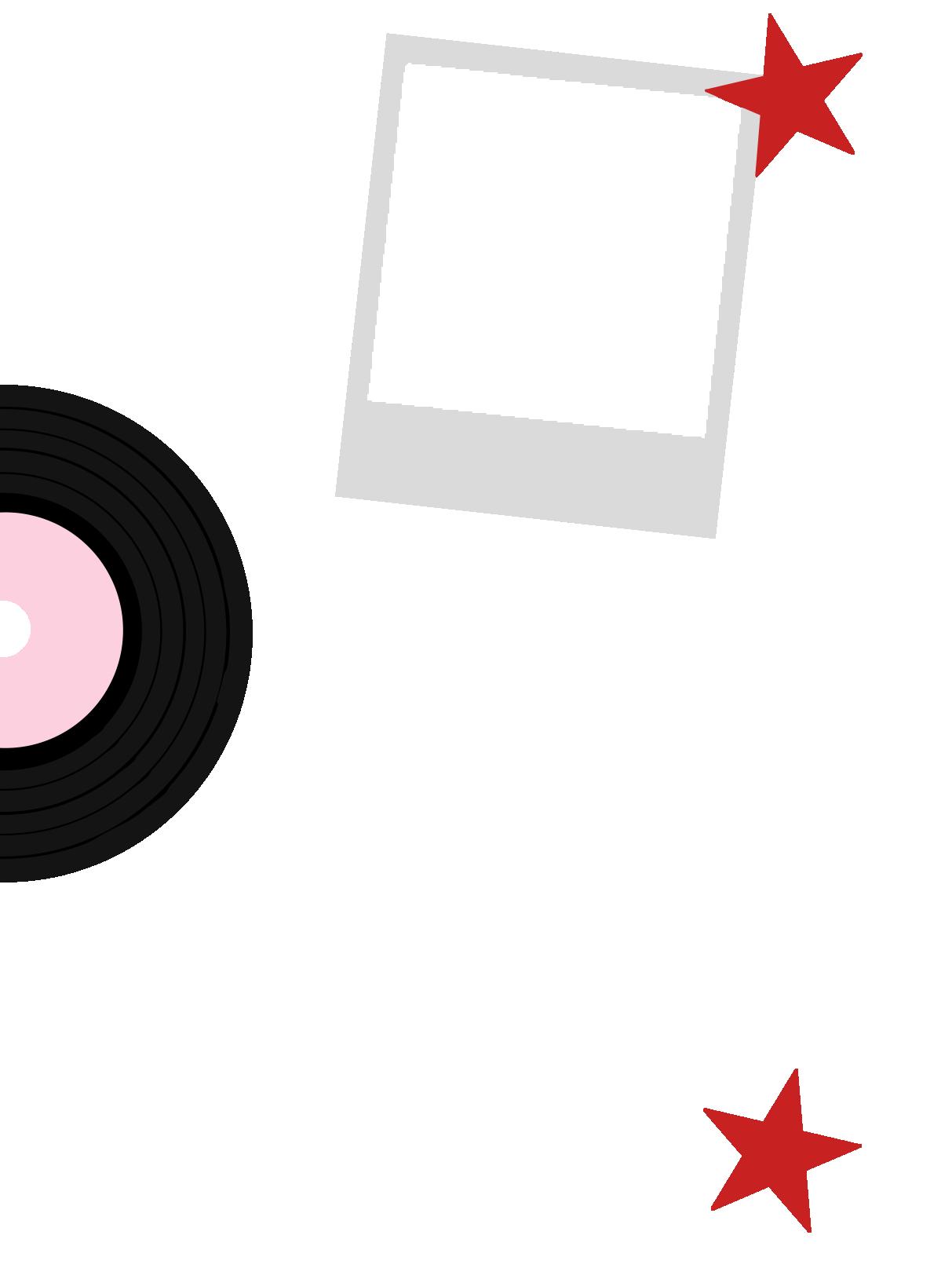



Even the best songwriters may never reach their full potential if they insist on singing all their own songs. The 6ths’ Stephin Merritt is very aware of this. He’s best known for his work with The Magnetic Fields, but he also has a slew of idiosyncratic side projects — The 6ths are the most fascinating of the bunch. Merritt is no stranger to writing songs and inviting other vocalists to sing them, but the 6ths deals in this practice exclusively. His songs as The 6ths are cheerier than his other work, but they are not devoid of his signature dreary wit. These albums feature an eclectic mix of vocalists, including 90s indie-rock icons, 80s synthesizer legends, and a pioneer of the American folk music revival.
The 6ths’ first album, Wasp’s Nest, is a treasure trove of plucky indie-pop tunes. Many of these songs are about heartbreak and falling out of love, but these melancholic topics taste sugar-sweet over Merritt’s arrangements. The chorus of “Falling Out of Love (With You)” makes disenchantment with a former lover sound like a nursery rhyme. The rhythmic declarations of the vocalist’s apathy are vitalized by punchy drums and melodic guitar riffs, making the track danceable rather than devastating. Even if the listener is paying attention, by the time the second chorus starts, they forget that they’re supposed to be upset at all.



Wasp’s Nest is enhanced by a catalogue of 90s indie rock stars; while Merritt’s deep bass voice is moving, different vocalists breathe new life into his songs. Merritt wrote the songs and rough demos for Wasps Nest and mailed them to guest vocalists. The guest vocalists then mailed back their recorded vocals to Merritt so he could piece together the final tracks. This disjunction allowed the vocalists to share their interpretations of Merritt’s songwriting. Some notable features on this album include Dean Wareham of Galaxie 500 and Georgia Hubley of Yo La Tengo.
While Wasp’s Nest explores the boundaries of indie-pop, The 6ths’ second album, Hyacinths and Thistles, investigates how to best showcase the talents of its collaborators. When writing these songs, Merritt took inspiration from the “chanson” tradition, which is a style of French songwriting where lyrics are the focal point of the song. This approach saw more minimalism than his previous work, which left room for the featured artists’ talents as both vocalists and storytellers. These songs feel more intimate and confessional, even though Merritt was in the studio when they recorded their parts. For example, singersongwriter Melanie acts as a heartbroken lover wandering the city streets in “I’ve Got New York.” The only accompaniment to her drunken wailing is professional toy pianist Margaret Leng Tan plunking away at her toy piano. Hyacinths and Thistles is also unafraid to be absurd. “Oahu,” the album’s closer, ends the album with around twenty five minutes (or about half of the album’s run time) of sparse synth flourishes meant to mimic waves crashing on the beach of an island.


There are many unique moments on Hyacinths and Thistles, but the love songs shine the brightest. It’s no wonder that Merritt went on to write his magnum opus, 69 Love Songs, after writing the lyrics for this album. “You You You You You,” a simple romantic ballad supported by Merritt on the acoustic guitar, is the epitome of infatuation. The song combines everything that makes Merritt’s lyricism so effective: a straightforward, sincere chorus set to a classic melody, with verses that include humor and playfulness that can awaken butterflies in the stomachs of even the most heartless. How can one not be charmed by Whalen’s tongue-twisty proclamation of affection: “every dream I dream’s a dream of dreamy little you?” Perhaps that’s why the 6ths are insistent on a band name and album titles that are made up of tongue twisters. Merritt writes about feelings that are difficult to articulate, and his gift of clarity will wrap its way around your tongue, your mind, and your heart.
• Rilyn Szabo (Behavioral Neuroscience / Design)


Something in the Way Fest
Something in the Way Fest, hosted by Run For Cover and The Bowery Presents was expertly curated for Boston’s emo, punk, and indie rock fans. This was the second iteration of the festival, which first took place in New York City in 2016. This year’s festival featured 24 bands, two opposing stages, and no overlapping sets, making it possible for attendees to catch every minute of music throughout the weekend. Many of the bands on the lineup came from Run For Cover’s roster, supplemented by other staples in the rock and punk scenes.
Saturday opened with Women in Peril, a self-proclaimed “emo dog rock” band. The band danced together throughout their spunky, upbeat set, their energy hitting its peak during their unreleased song “No Fun.” Equally eccentric “Like a Dog” features an explosive chorus and canine-related phrases like “You’re dragging me out on a leash” and “You look at me with those puppy dog eyes.” Throughout the set, they exhibited this playful lyricism and chemistry with one another.
Seattle grunge-pop band Great Grandpa’s set was a notable deviation from the other high-energy bands. Their use of acoustic guitar and frontman Al Menne’s soothing vocals gave them a folksy edge. After announcing their new record Patience, Moonbeam, releasing on March 28, they played “Junior,” a soft ballad that brought
calm and coziness to the crowd. In stark contrast, Great Grandpa’s laid-back set was immediately followed by eclectic, Floridabased hardcore punk band Gouge Away. Lead singer Christina Michelle’s powerful, impassioned vocals rang clear throughout the venue, and the band’s energy inspired the first mosh pit of the day. The wide variety of bands included in the lineup brought together all kinds of fans, allowing everyone to enjoy familiar acts and discover new music. Another raucous, mosh-pit-inducing set came from Anxious, a hardcore punk band from Connecticut. Their band members matched the lively energy of their music, dancing, jumping, and interacting with crowd surfers on stage, most notably the Grillo’s pickle mascot. Bodies flew across the stage as Anxious closed their set with “Growing Up Song,” which features an anthemic refrain that the crowd enthusiastically sang along to. Already amped up from a day of energetic performances, the audience’s excitement rose further as American Football took the stage. Cheers erupted as the instantly recognizable house from their self-titled debut rolled onto the screen behind them. After opening with “Five Silent Miles,” an instrumental song from their first EP, they launched into songs from their self-titled album, including “Honestly?,” “For Sure,” and “Stay Home.” The trumpet solos, featured in songs like “The Summer Ends,” were
beautiful, sending waves of nostalgia over the crowd. Kinsella’s vocals sounded more mature than the original recordings, adding more nostalgia to a record already filled with it. The set concluded with “Never Meant,” the hit song that opens American Football, and the crowd sang along to every word. Although many attendees had been at Roadrunner for over eight hours, the crowd remained just as spirited during the final two performances as they were at the beginning of the day. The Grillo’s pickle mascot was spotted crowd-surfing again as Balance and Composure opened with “Parachutes,” and the day concluded just as incredibly as it started with the guitar and synth-laden track “Notice Me.” Although the festival was only halfway done, it already proved to be an incredible celebration of rock and punk music, highlighting an expansive roster of bands.
Day 2 of Something in the Way was a tangle of wires on stage and a tangle of limbs in the audience. It was the force of a stranger’s body against yours in a mosh pit, and then that same stranger helping you find a pair of glasses you lost in the action. It had the grunge charm of a DIY basement show, but ran smoothly like the well-planned festival it was.
From the start, it was clear that audiences had not only unwavering loyalty to their favorite band, but also an openness to hear newer artists. This is both a testament to a good artist curation on Run for Cover’s part, and an open-minded crowd, as is often found in hardcore/punk scenes. A wide range of ages were present at this festival, from swarms of college kids in dark eyeliner to people in 90s band tees old enough to be their parents. The latter cohort could be overheard appreciating hearing younger bands such as Wishy & Mini Trees kick off the festival – a testament to the intergenerational bridge the festival built.
Although Roadrunner is a relatively small space for a two-day festival, the venue made it work with a second platform by the sound booth; the stage’s significantly smaller size & height was perfect for the more hardcore bands in the lineup to harbor mosh pits on three sides of the stage. Early in the day, Philadelphia-based shoegaze group TAGABOW faced inwards with their
backs turned from the crowd, creating space on the stage itself for fans to run and jump in and out of the pit that had formed around this B-stage, almost acting as background music for the dance-like spectacle in the audience. Boston post-hardcore favorite Fiddlehead, the second-highest artist on the lineup, actually requested last minute to have their set moved to the smaller stage, the lead vocalist citing their desire to feel “completely, entirely, and totally connected.”
The use of an indoor venue proved ideal for the niche the festival catered to. Something in the Way was a truly immersive experience; it reflected the innate physicality of punk, rock, shoegaze & adjacent genres. You could not walk anywhere in the venue without hearing – and feeling the vibrations of – whatever act was performing. This physical intensity mirrored the festival’s deeper ethos, one that rejected complacency and demanded unfiltered candor. Those who turn their back to the rejection of mainstream institutions and raw catharsis that punk has always been (notably seen in Mannequin Pussy’s condemnation of the U.S. government) simply cannot escape without fully leaving the festival entirely. Those that can’t get enough, or those that need more, are quite literally surrounded by wild energy. This sense of community pulsed through the entire experience & manifested itself in the clear camaraderie between not only audience
members, but the bands themselves. Alternative rock outfit Militarie Gun shared their adoration for multiple other bands in the lineup, including Fiddlehead, Dazy, and Mannequin Pussy; MSPAINT, who had performed the day prior, was also brought out for a song in their set. Nearly every band took the time to thank and praise Run for Cover’s influence in their genre.
As the festival reached its final hours, energy only increased. Headliner Slowdive took the passion and anger from Fiddlehead and Mannequin Pussy’s sets and turned it into an ethereal, almost cathartic stillness, closing the experience with a sonically and visually hypnotic show. The shoegaze-chic group's signature spacey yet powerful sound served as a fitting culmination to the festival's theme of total immersion. Something in the Way was more than just a series of sets. It was evidence of music's ability to unite and transform both a space and the people inside. While the crew packed up equipment and the bands loaded their tour vans, the sense of connection lingered. Something in the Way Fesr served as a reminder that in this scene, no one is ever truly alone.
Emily Kobren (Design) and Praagna Kashyap (Political Science/International Affairs)
Puzzlemaker is a puzzle generation tool for teachers, students and parents Create and print customized word search, cris more-using your own word lists.

ACROSS
1. Don't be sad, you can see this artist on Saturday at Gov Ball...
3. This BRAT is playing day 2 of Coachella.
1 Don't be sad, you can see this ar tist on Saturday at Gov Ball
6. It escaped from the zoo! We need to...
7. We'll remember them for Centuries.
3. This BRAT is playing day 2 of Coachella.
10. Kids should look up to him... DOWN
6. It escaped from the zoo! We need to...
7. We'll remember them for Centuries.
2. Is this Gov Ball lineup giving you Deja Vu? Or is it just this pop artist playing on Saturday?
4. Who doesn't want you friend hanging out of your car...
5. No One Noticed? More like everyone noticed this artist at Coachella!
8. Ring Ring! Boston is...
10. Kids should look up to him... DOWN
9. Get "Charmed" on Sunday at Gov Ball by this artist.
2 Is this Gov Ball lineup giving you Deja Vu? Or is it just this ar tist playing on Saturday?
4. Who doesn't want you friend hanging out of your car...
5. No One Noticed? More like ever yone noticed this ar tist at Coachella!
8. Ring Ring! Boston is...
9. Get "Charmed" on Sunday at Gov Ball by this ar tist.
Grammy recap
It’s a wrap on the 67th Annual Grammy Awards, and Tastemakers is here to give you a recap and share our favorite artists and tunes from this season’s award winners!

Can you tell which six album covers we’ve zoomed in on?
“Not Like Us” - Kendrick Lamar
“Heated” - Beyoncé
“Die With A Smile” - Lady Gaga & Bruno Mars
“Taste” - Sabrina Carpenter
“Von dutch” - Charli xcx
“Mea Culpa (Ah! Ça ira!)”- Gojira, Marina Viotti, and Victor Le Masne
“Flea”- St. Vincent
“DENIAL IS A RIVER” - Doechii
“Twinkle Twinkle Little Me”- Samara Joy featuring Sullivan Fortner
“Love Me JeJe”- Tems
“Pink Pony Club”- Chappell Roan
“Made For Me”- Muni Long
“Saturn”- SZA
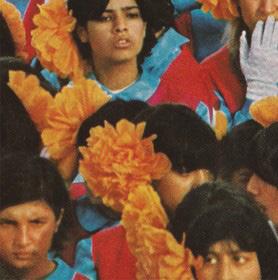

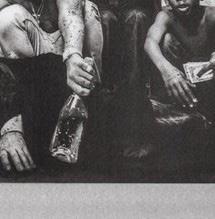
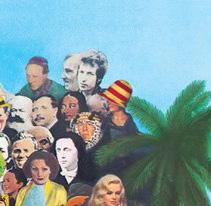


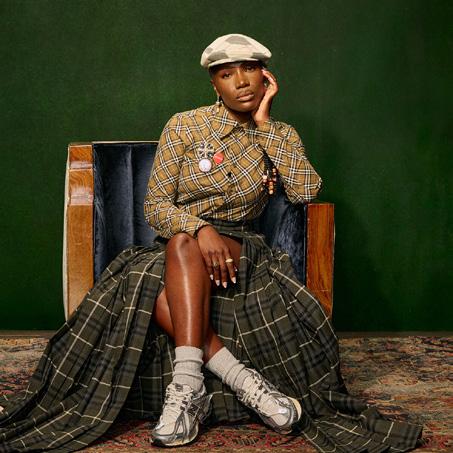
We’ve hidden the Swamp Princess Doechii somewhere in this issue. Find her and maybe something cool will happen...
Like what you read? Check us out online.
tastemakersmag.com @tastemakersmag on Instagram
